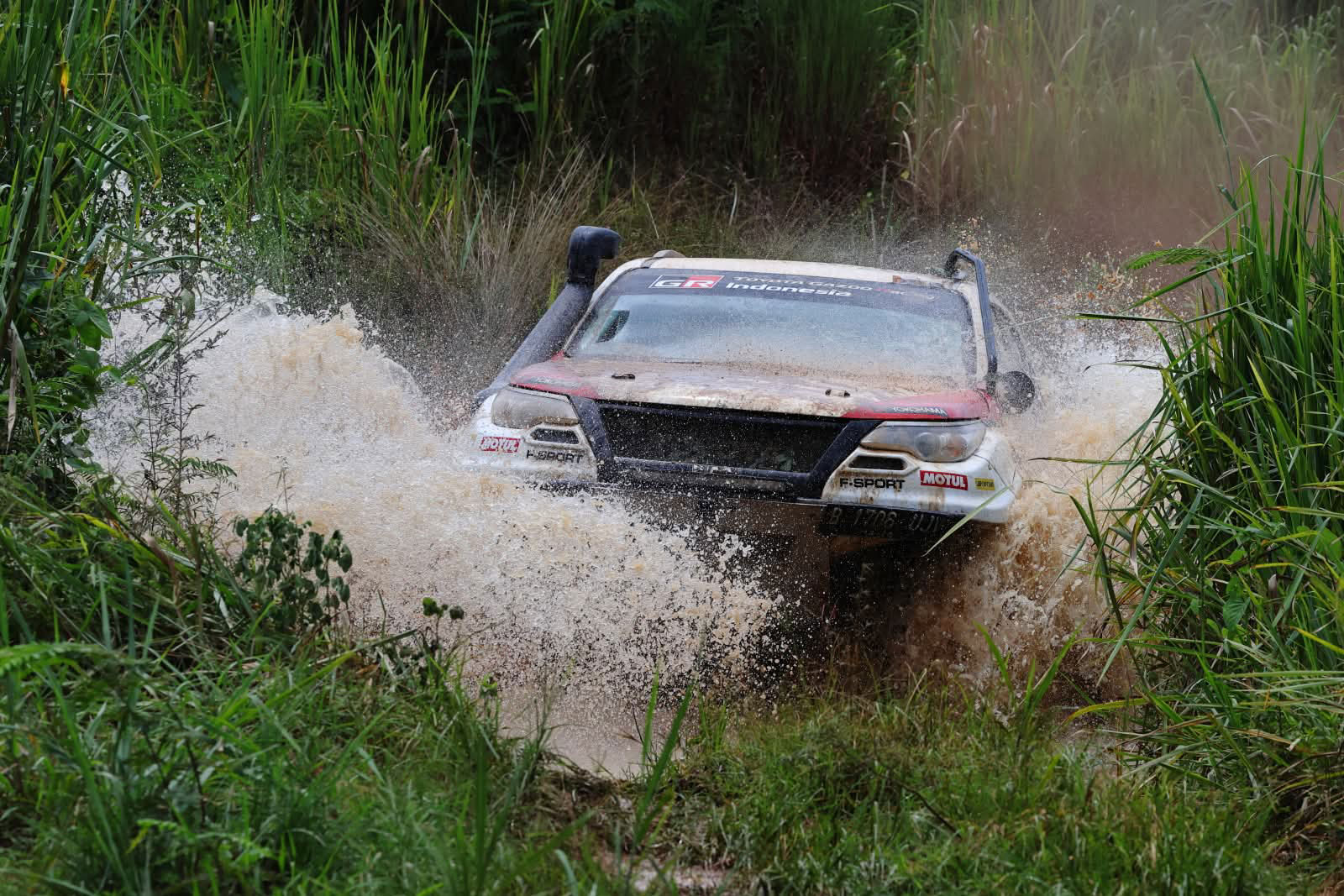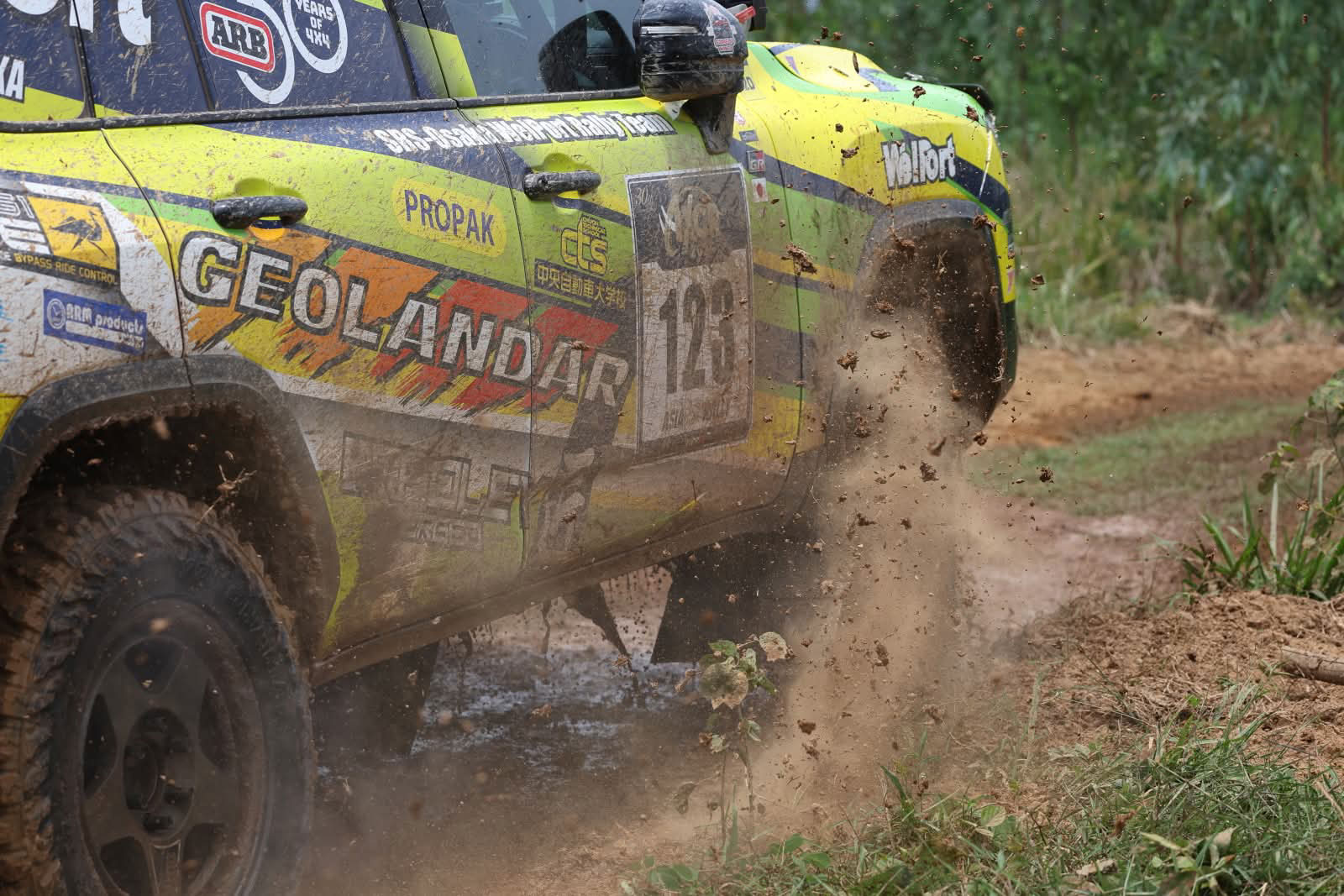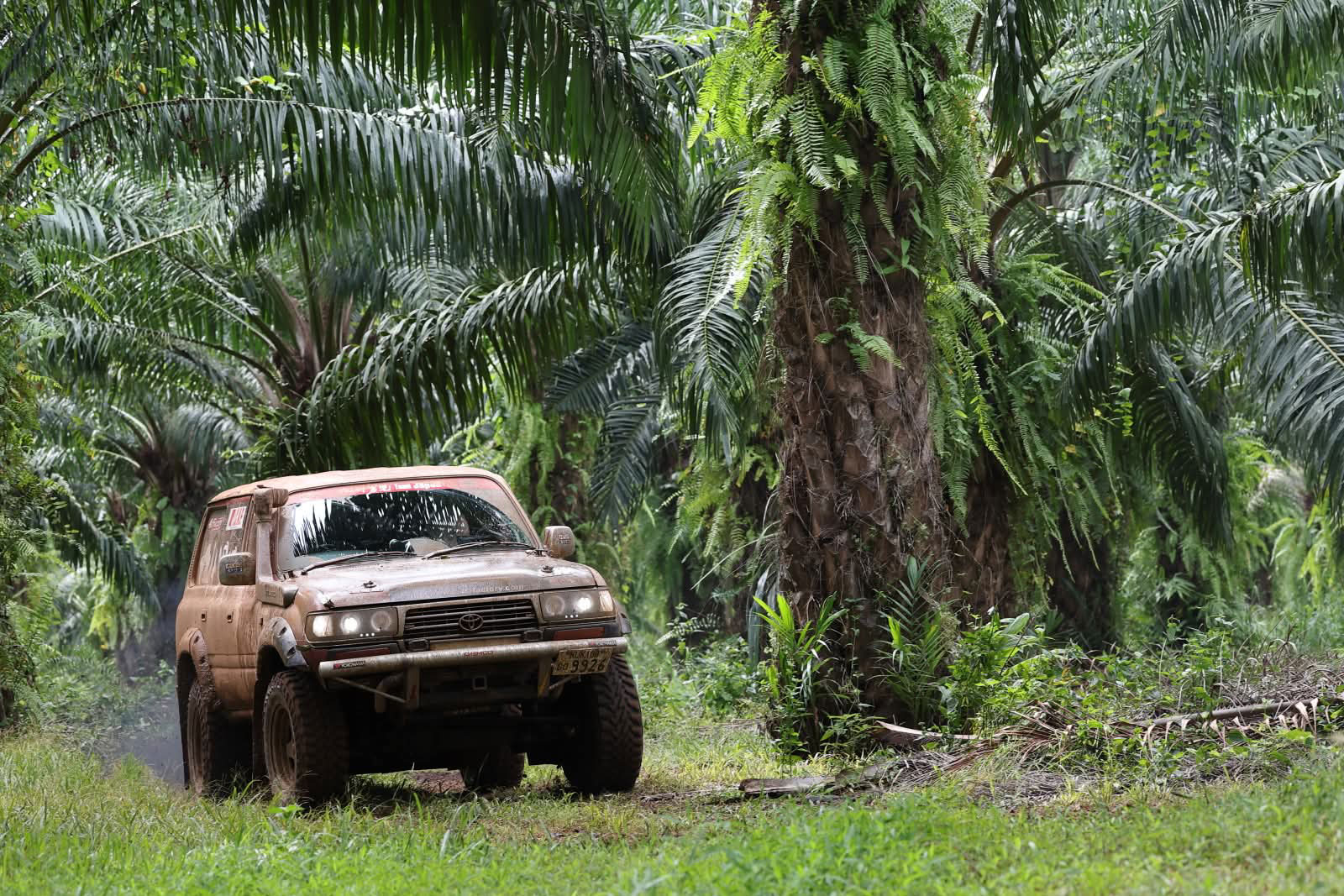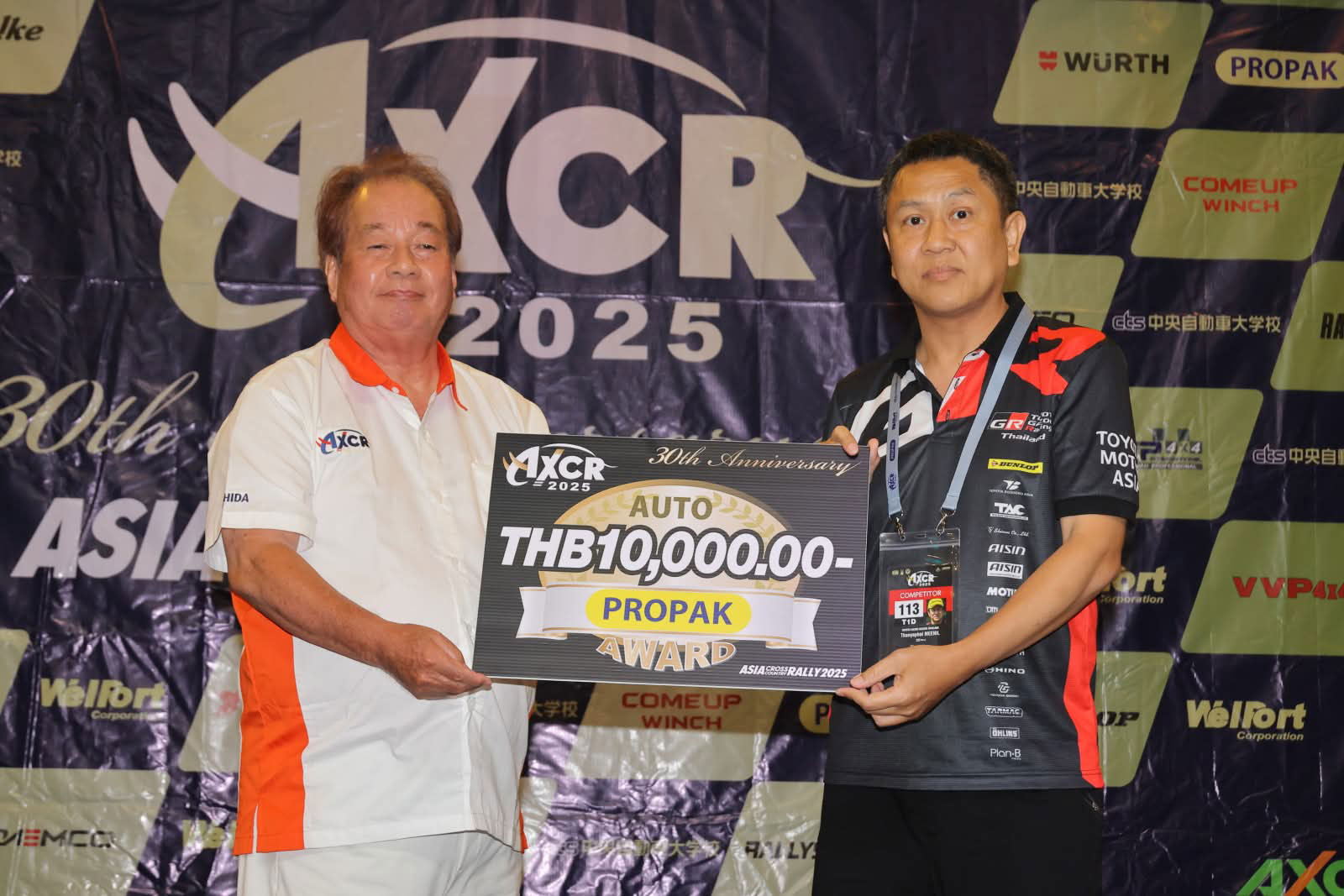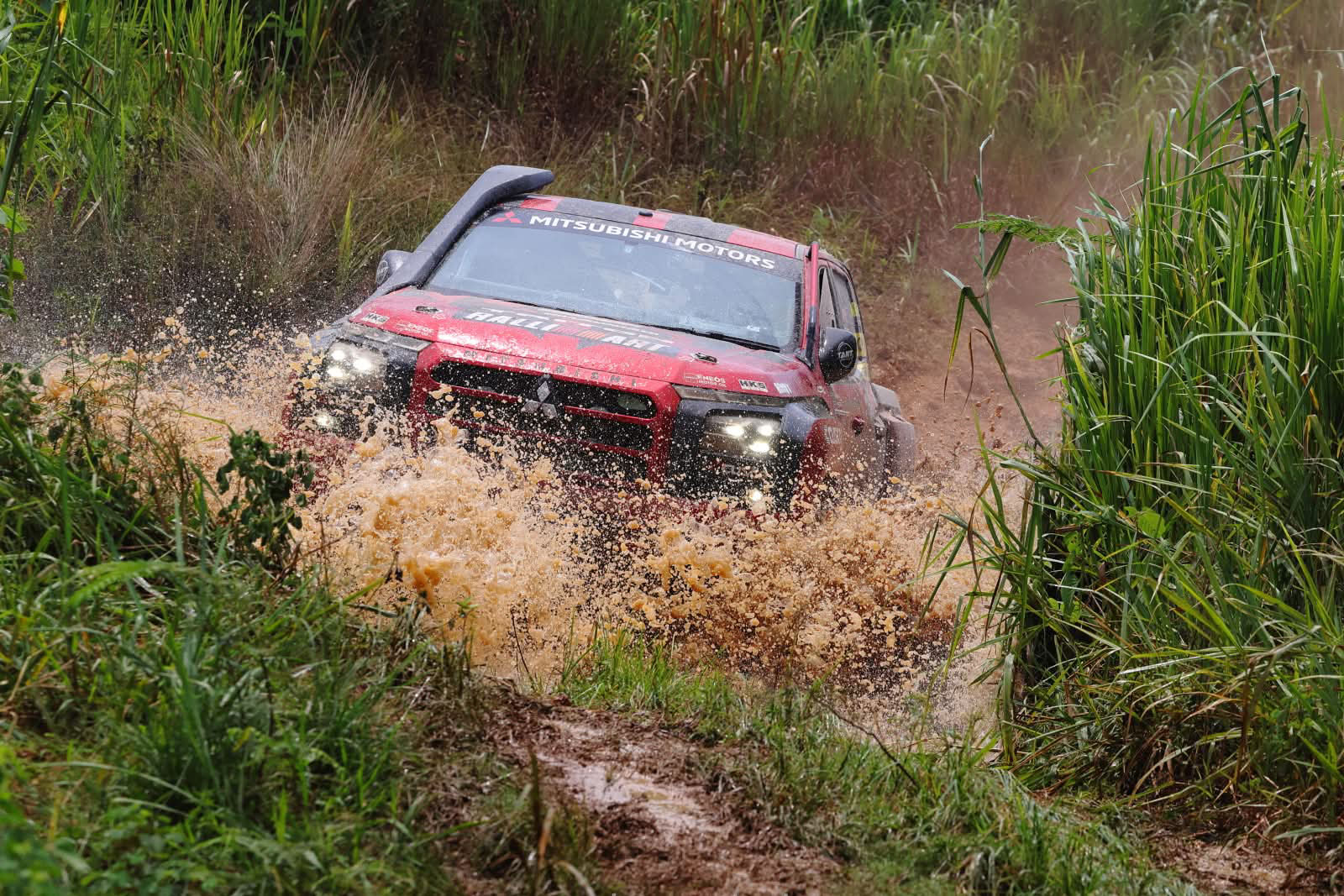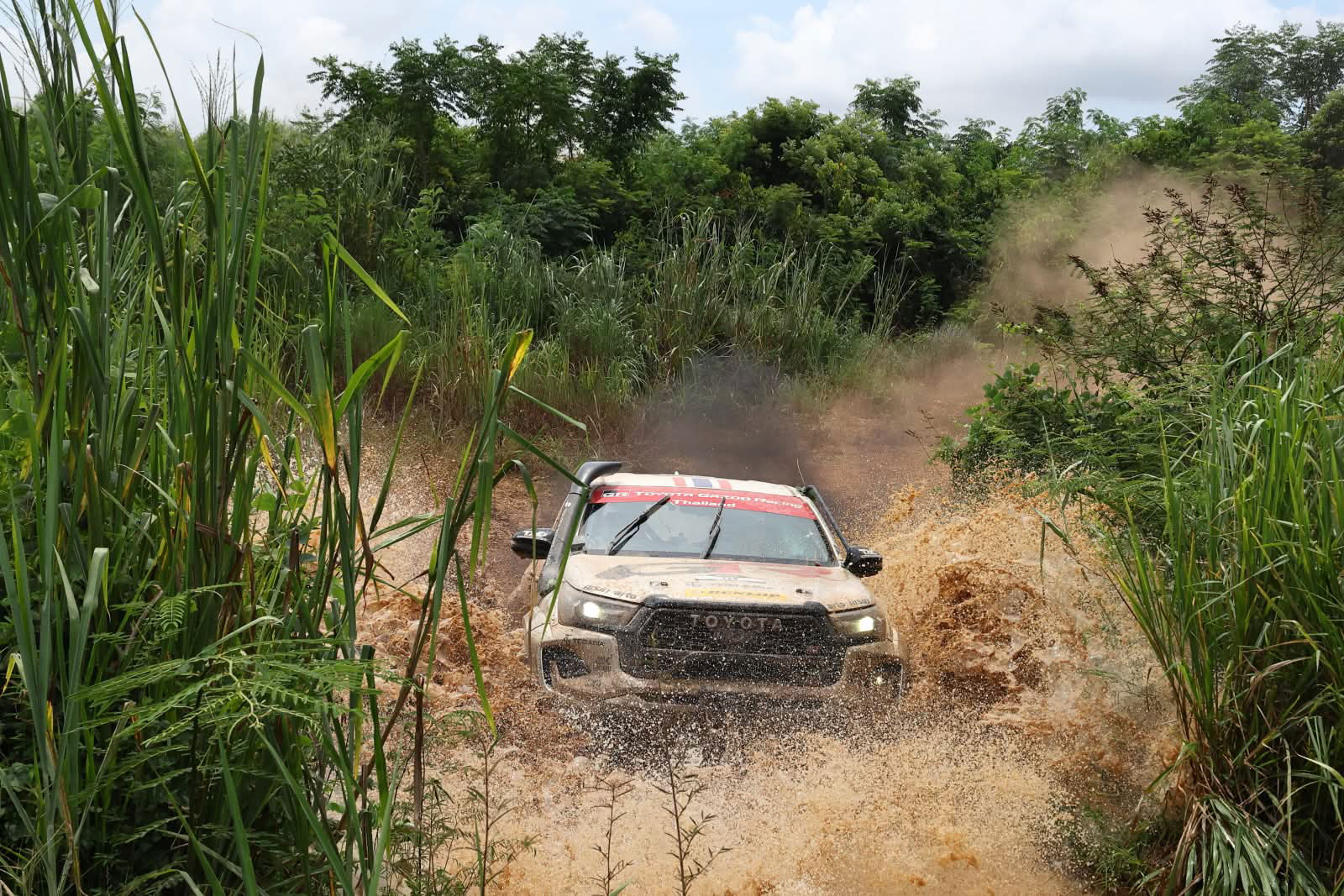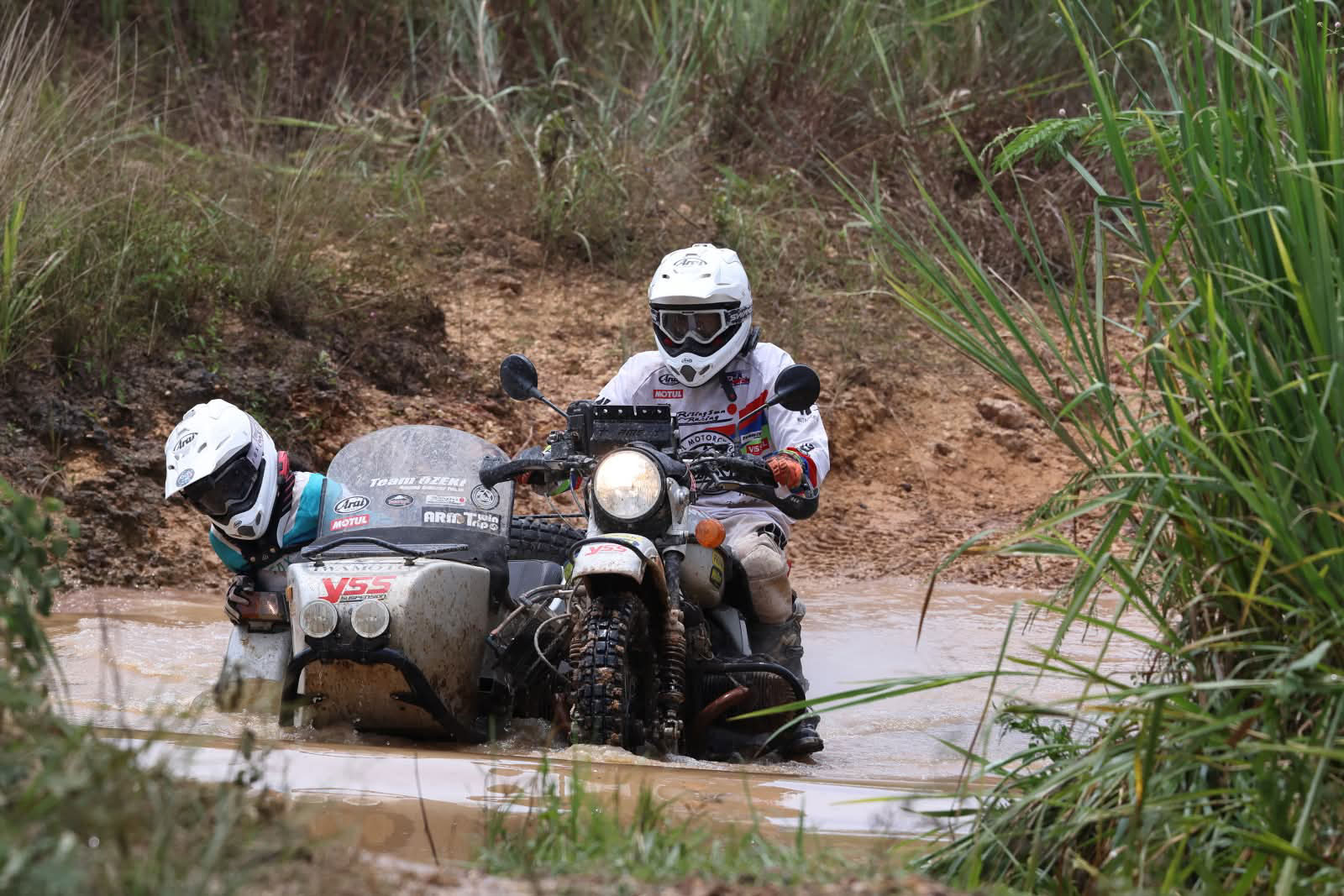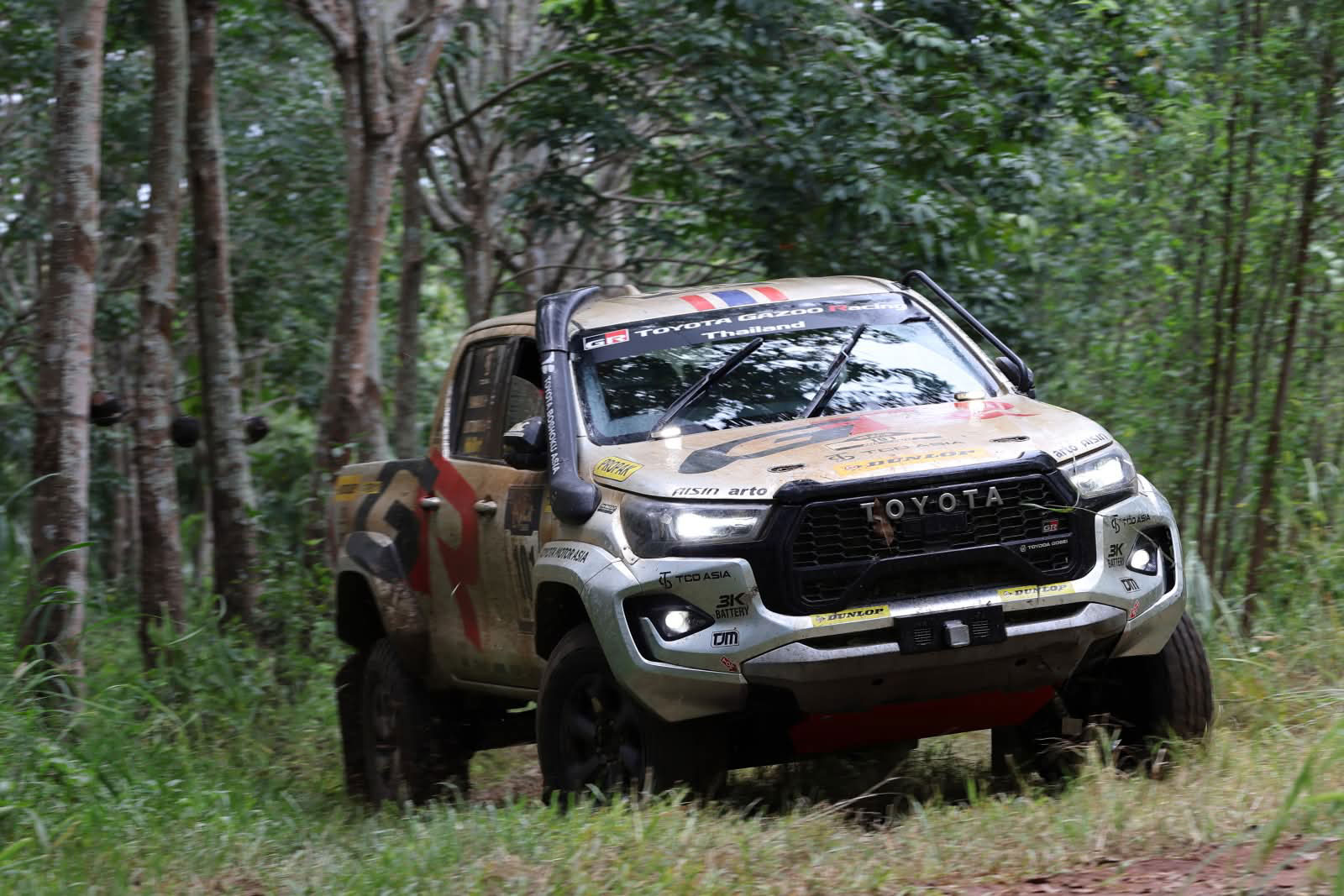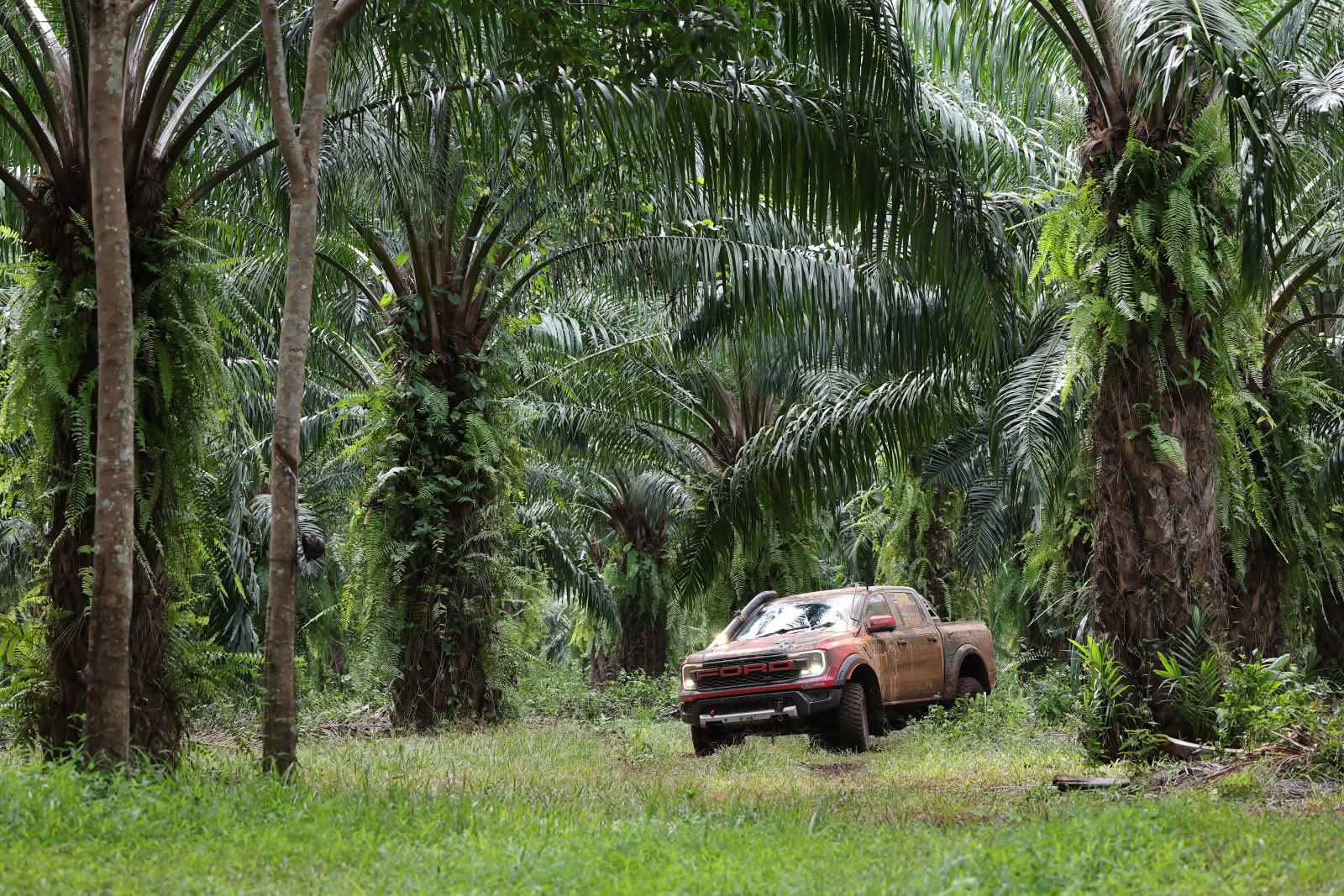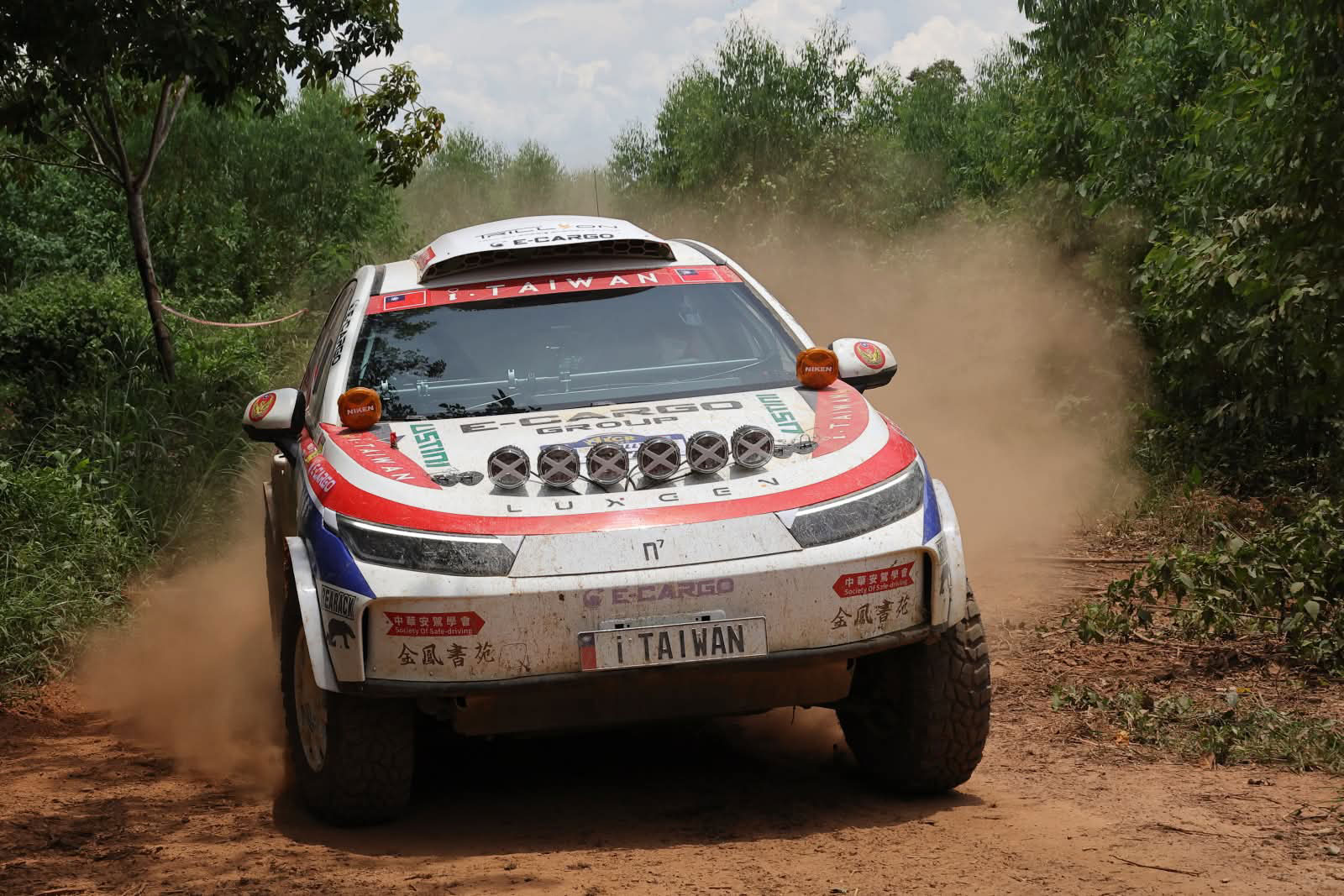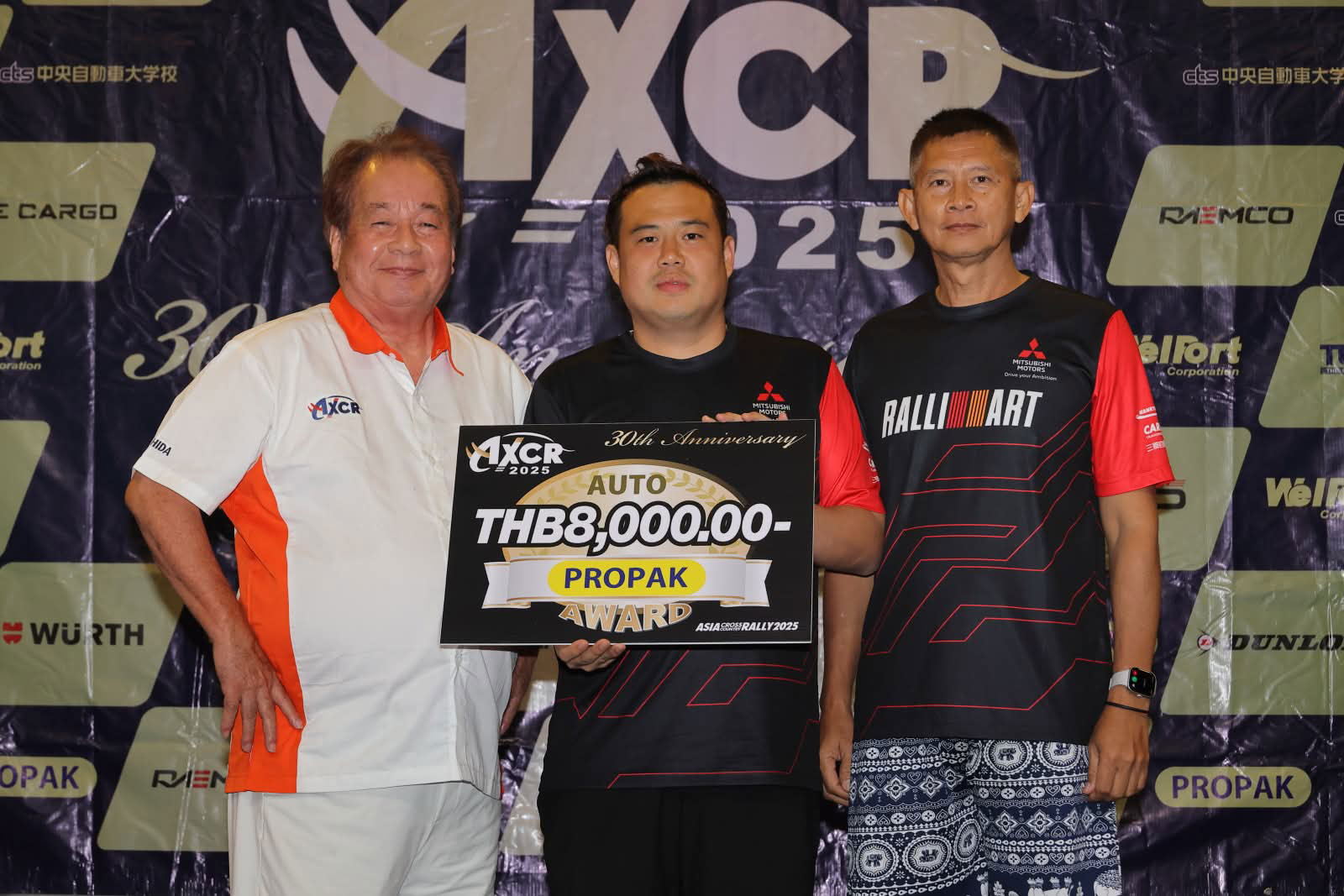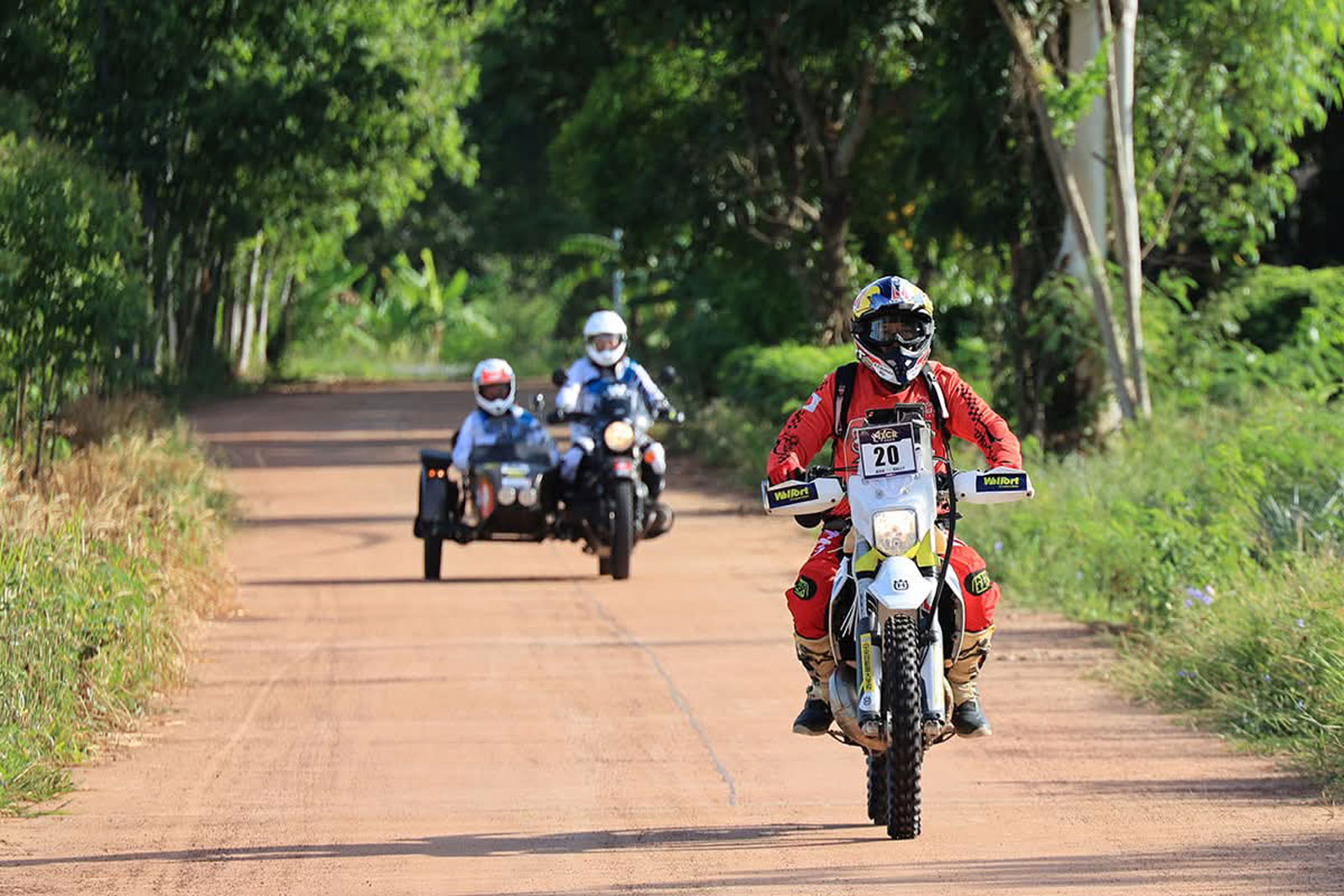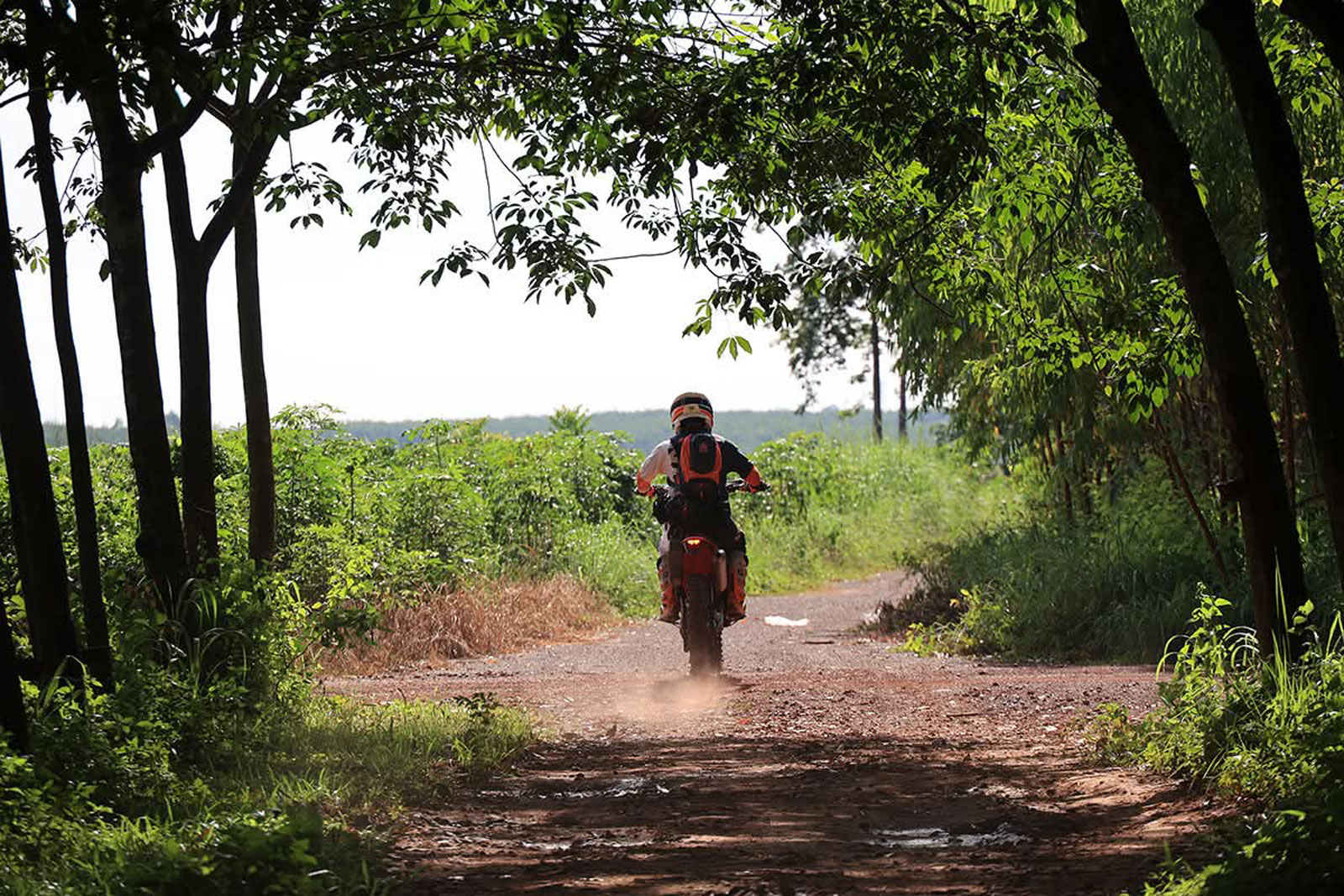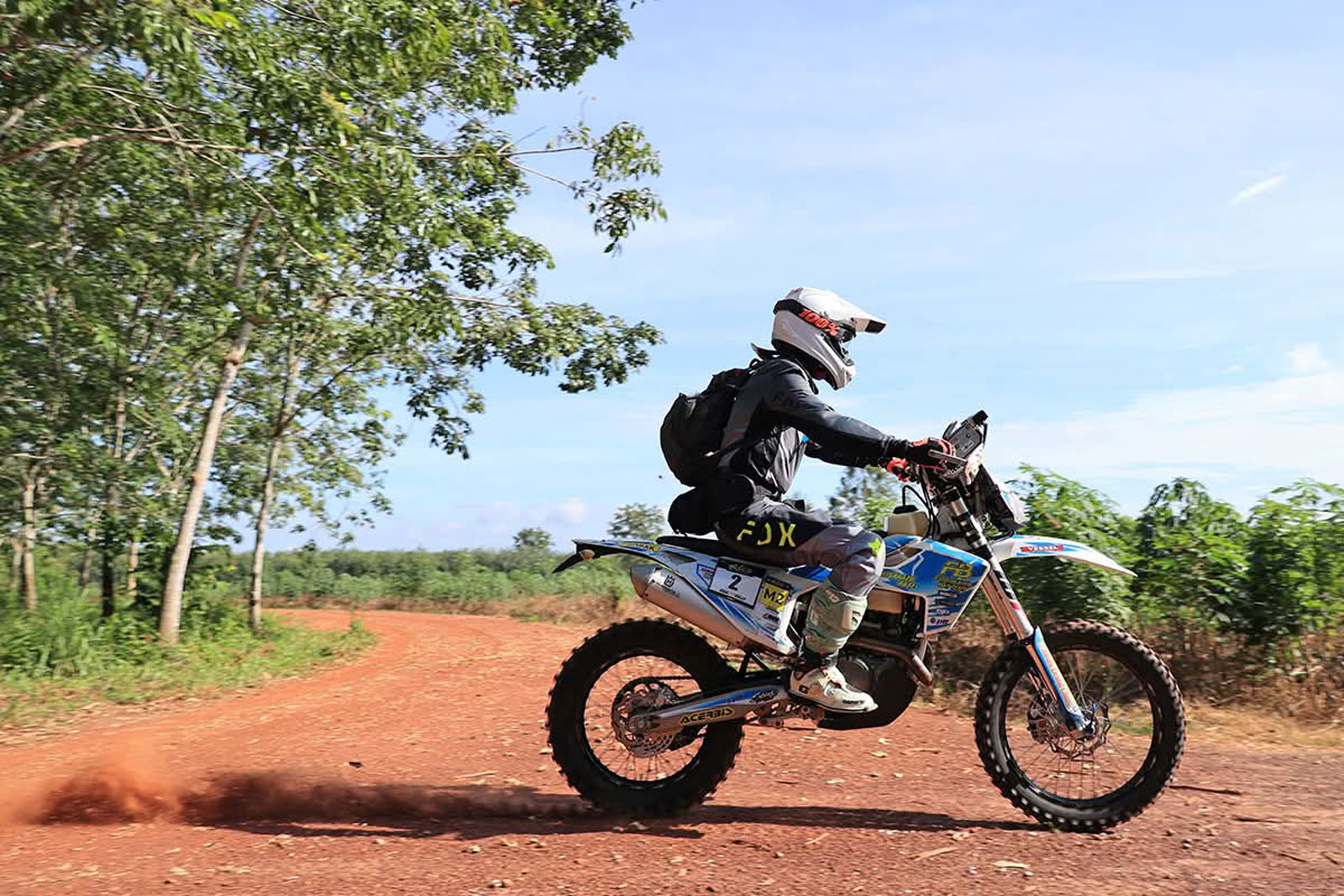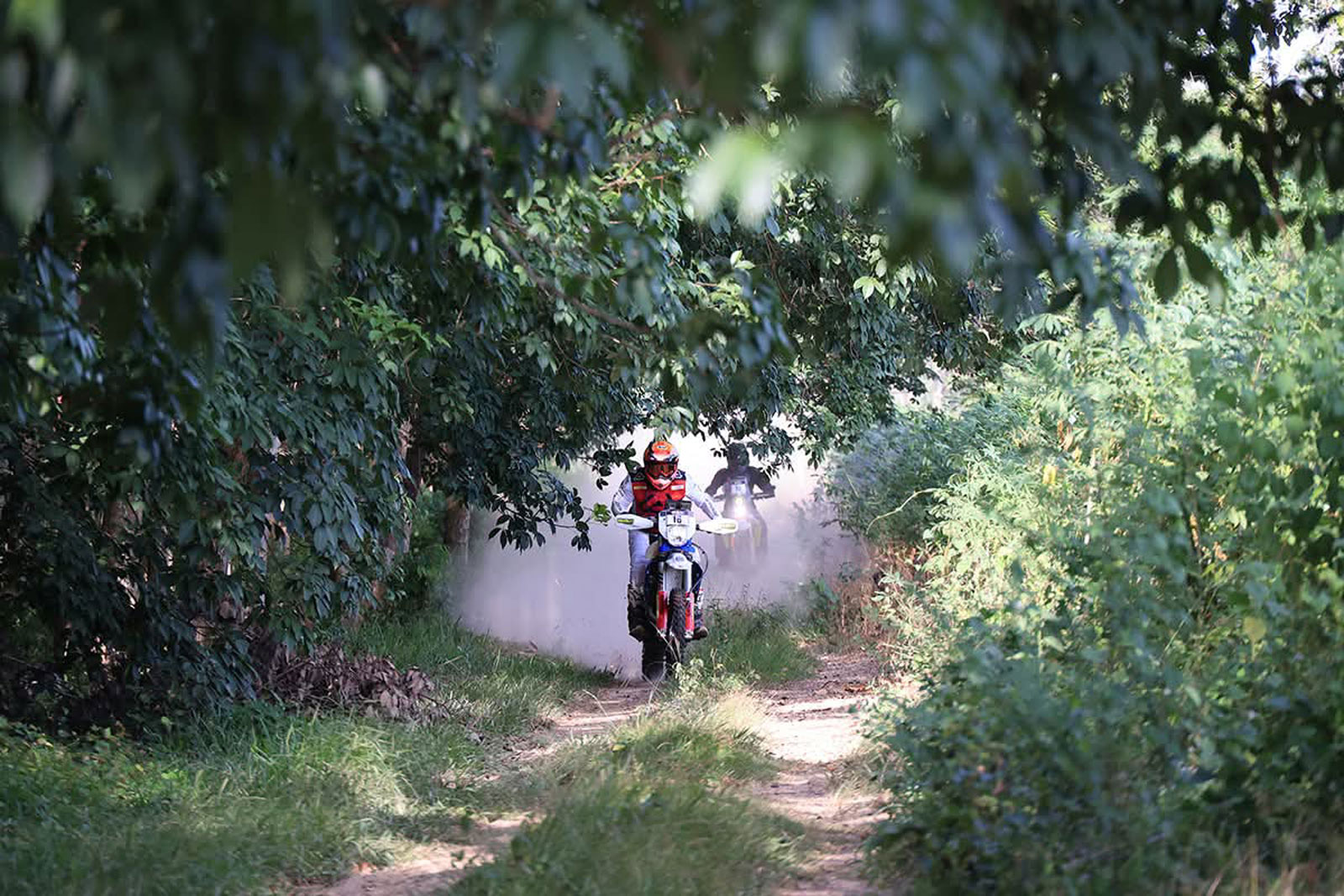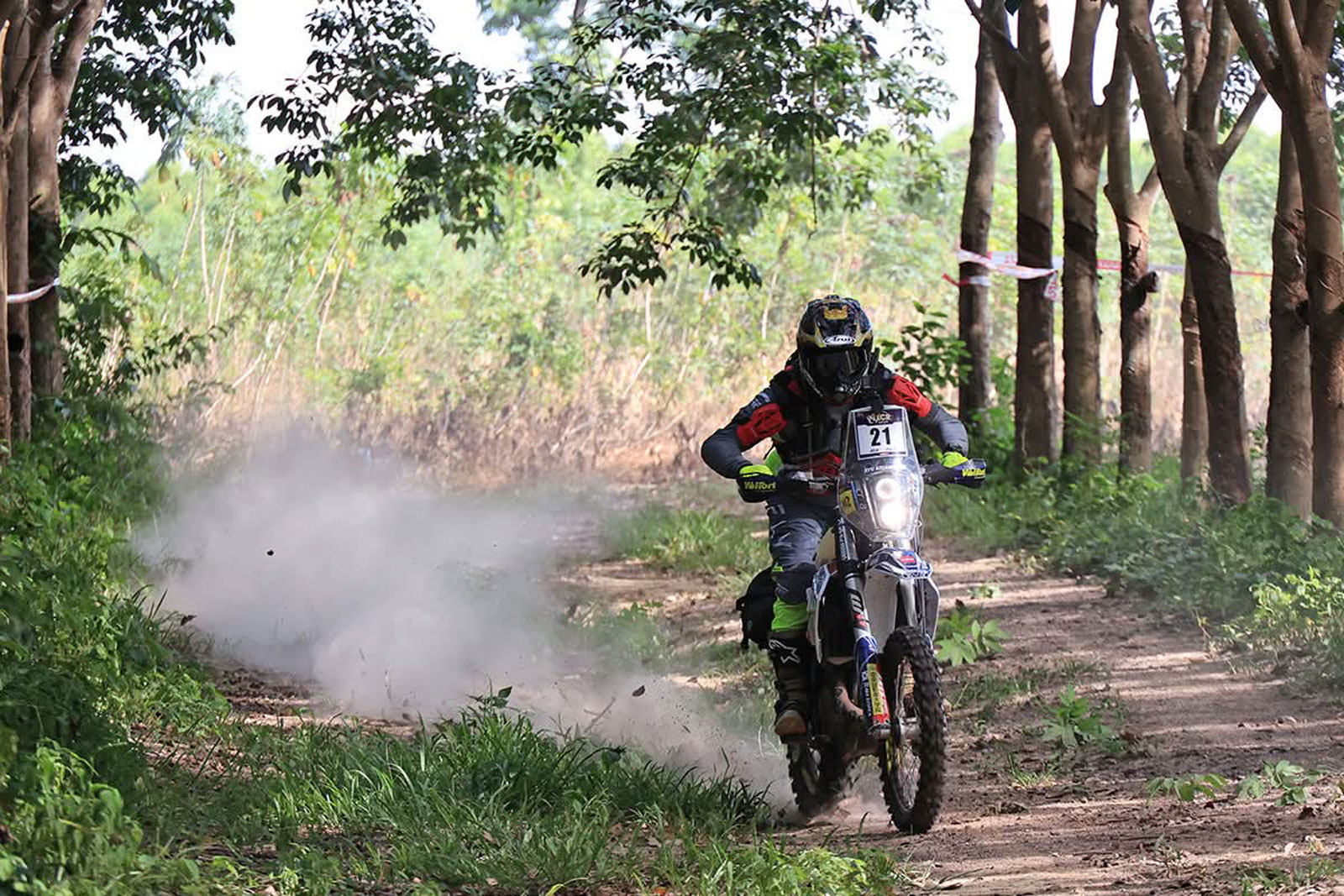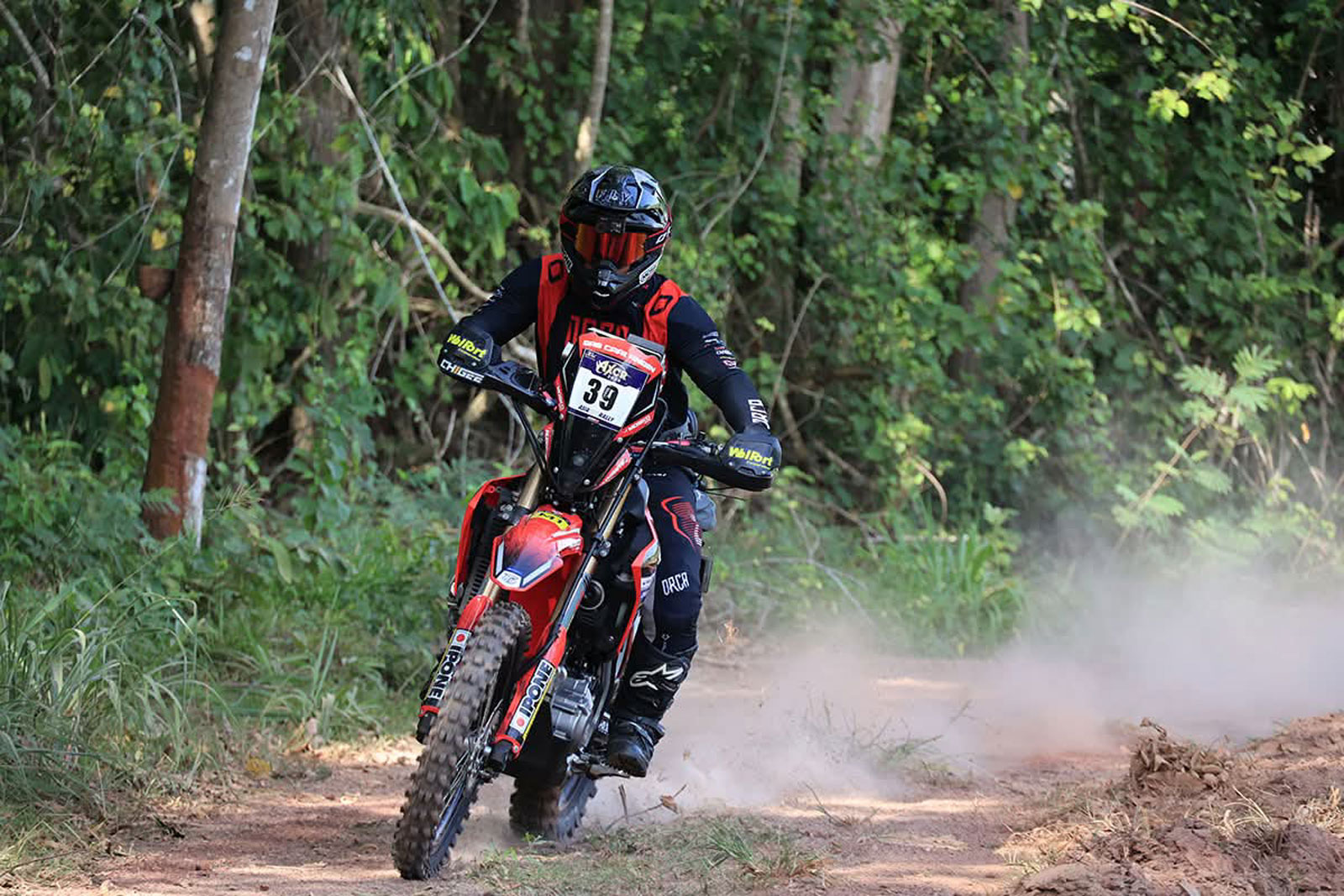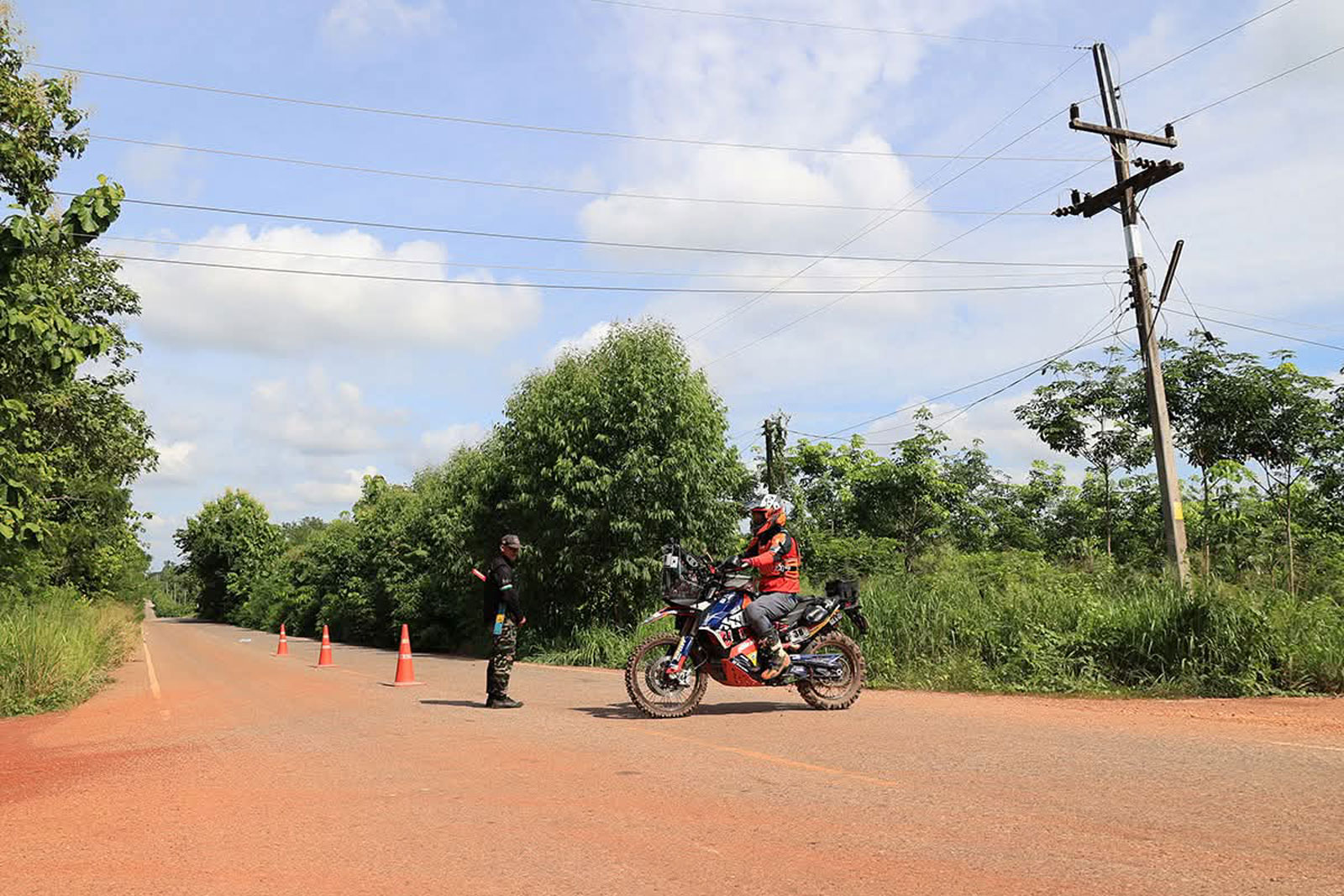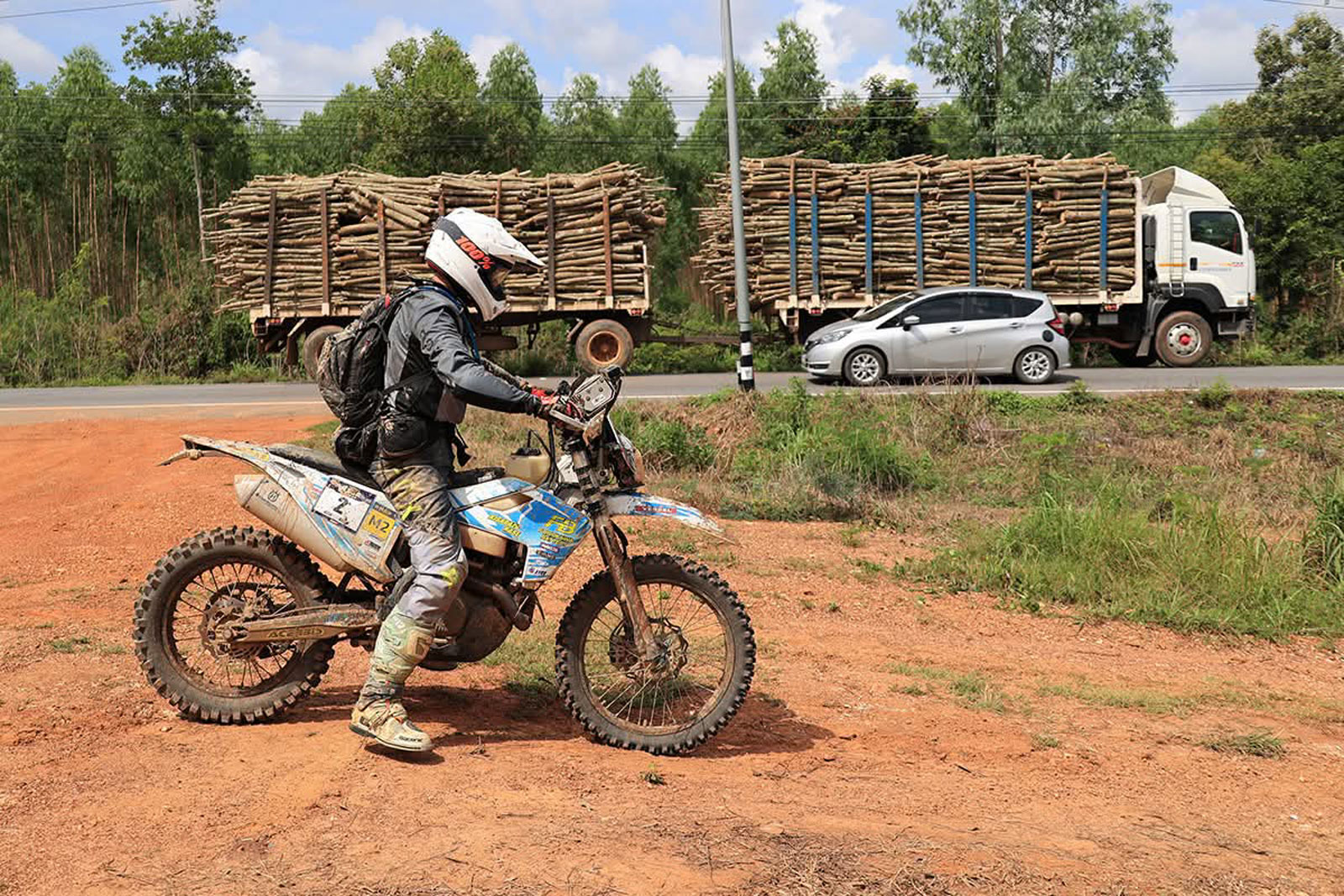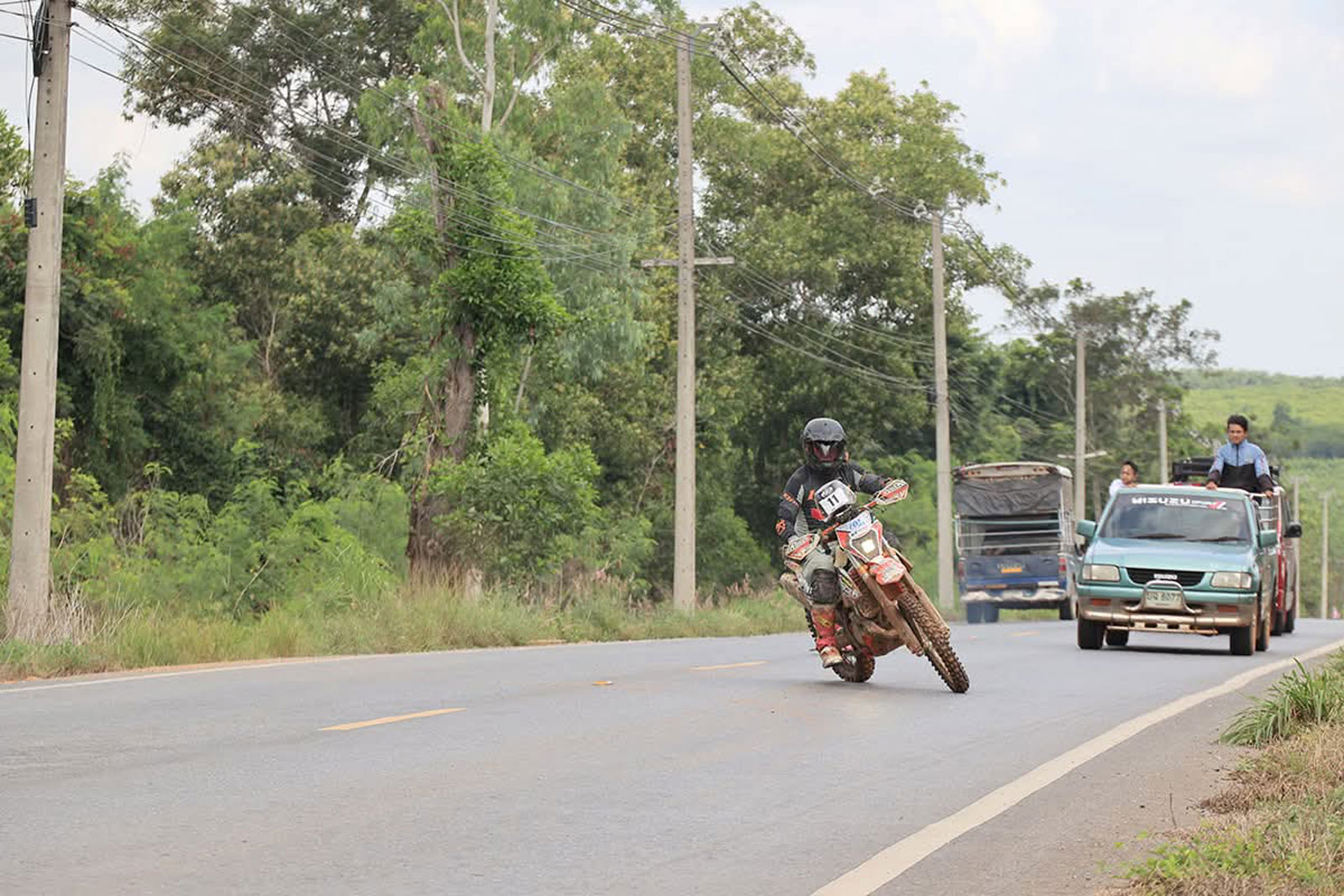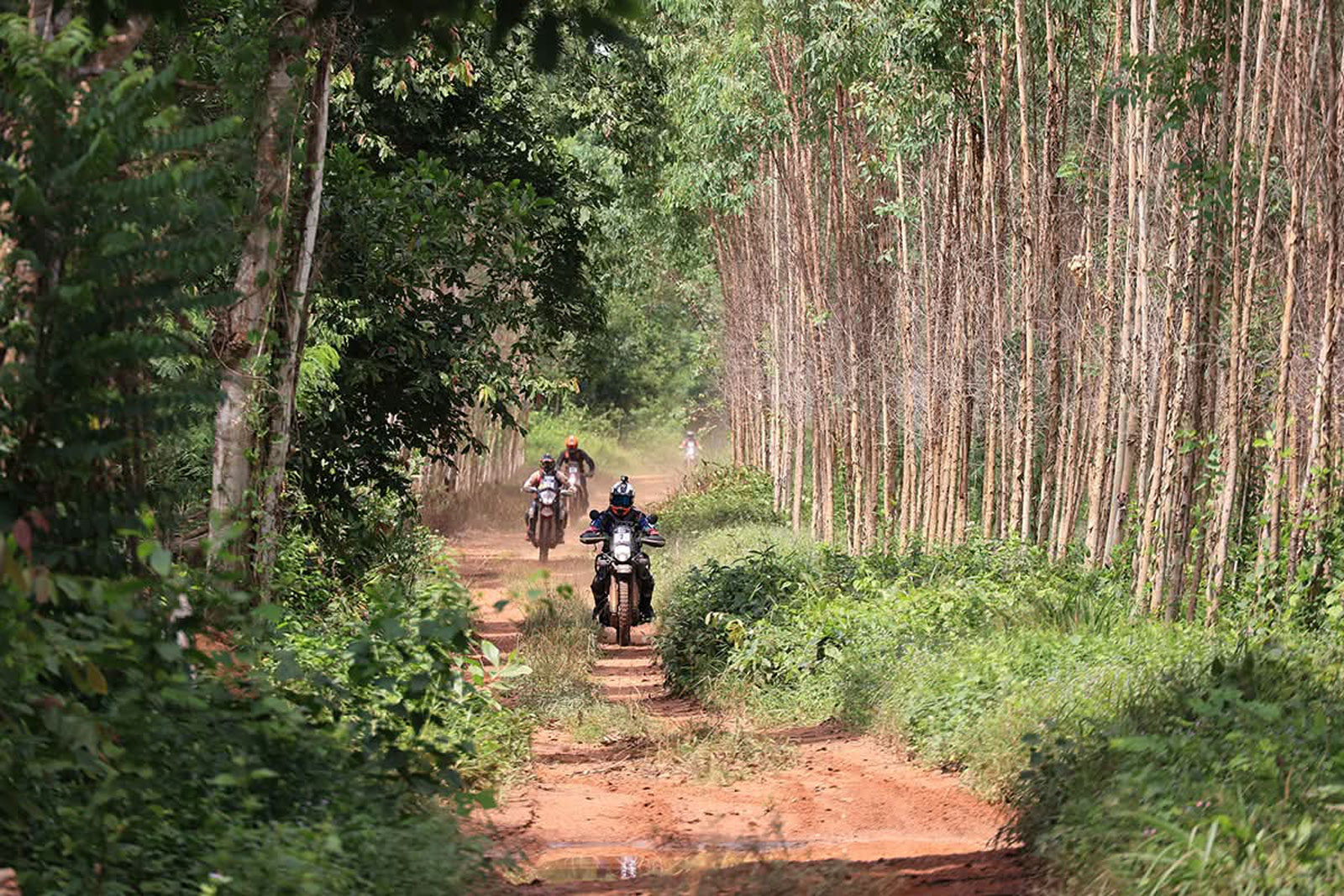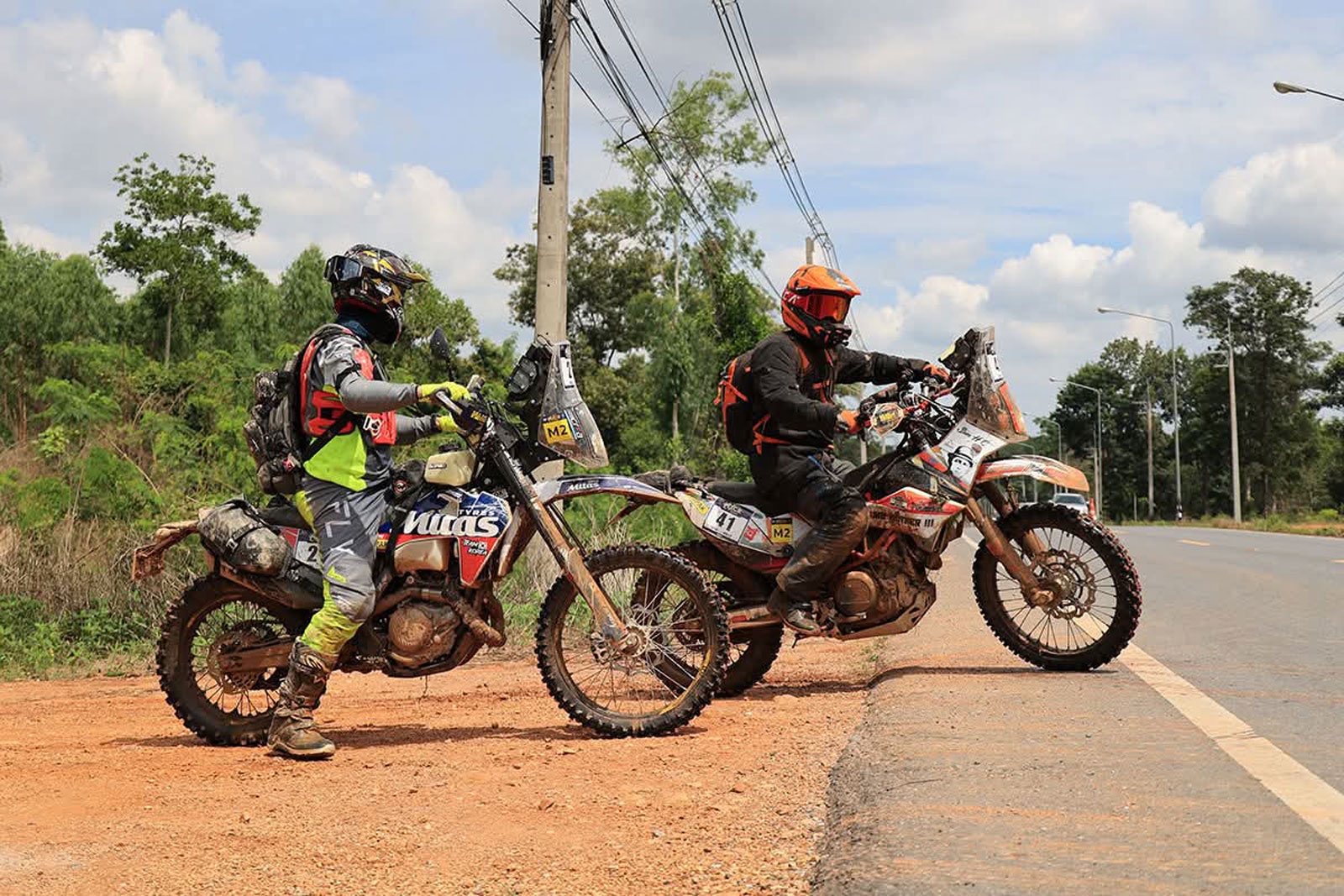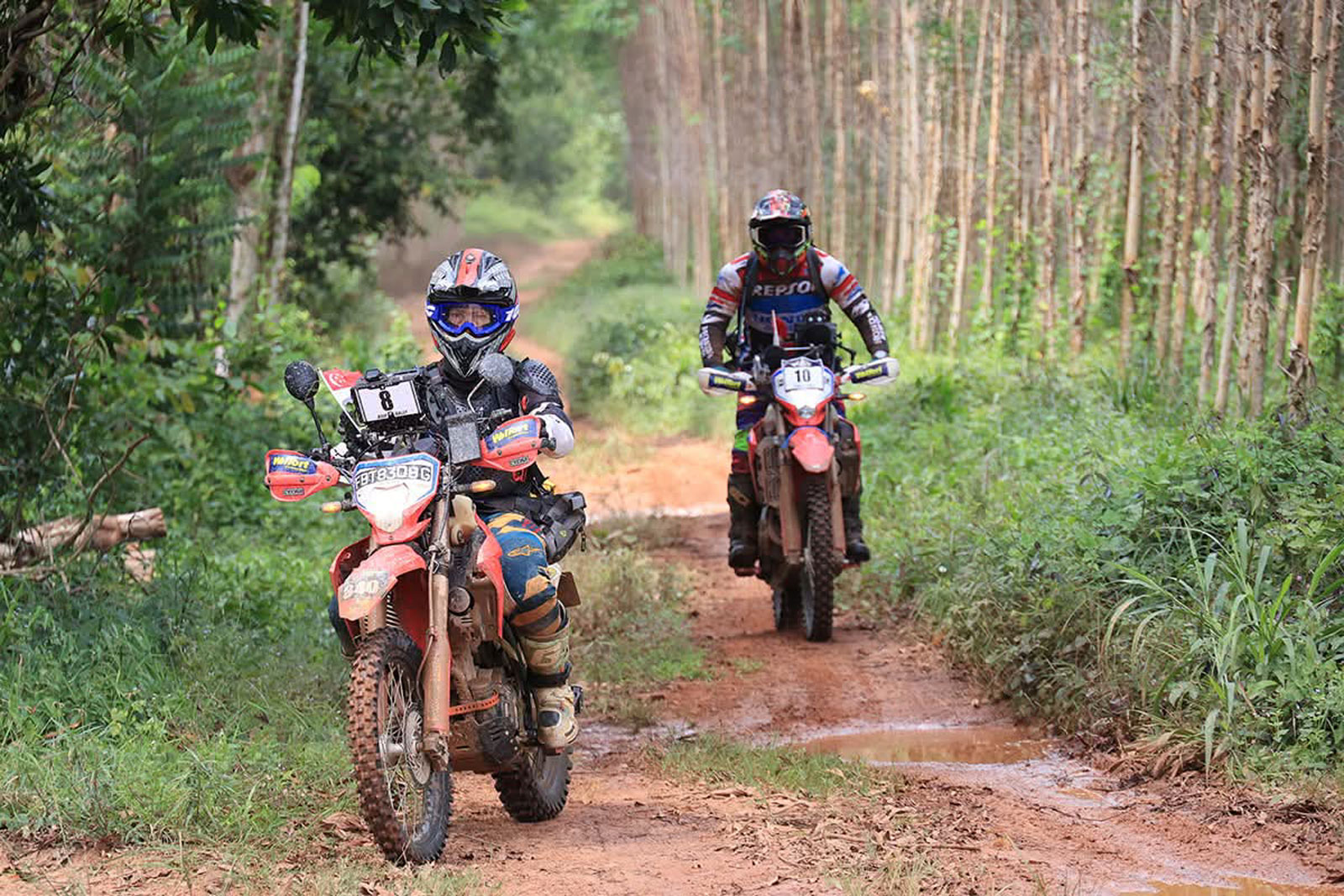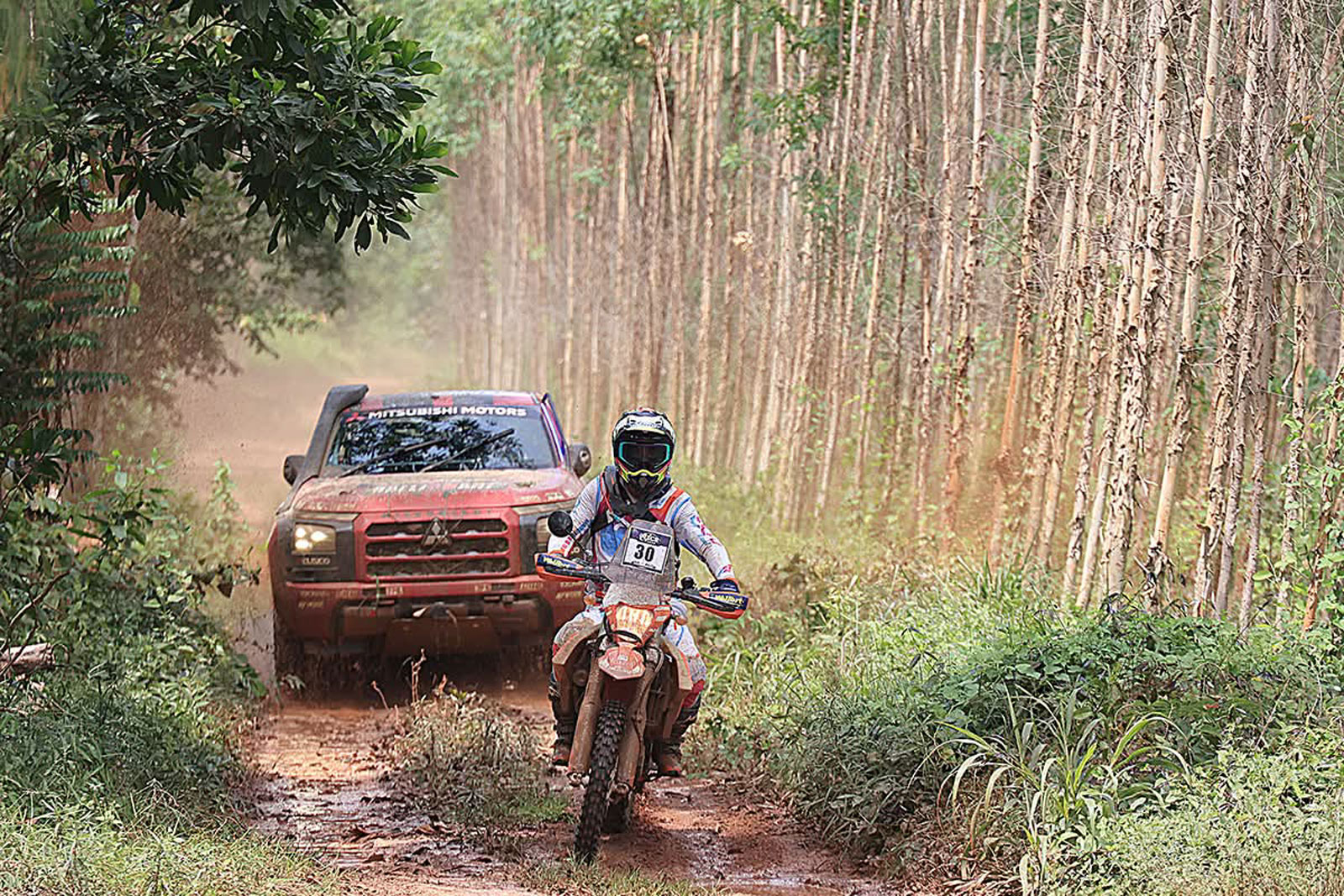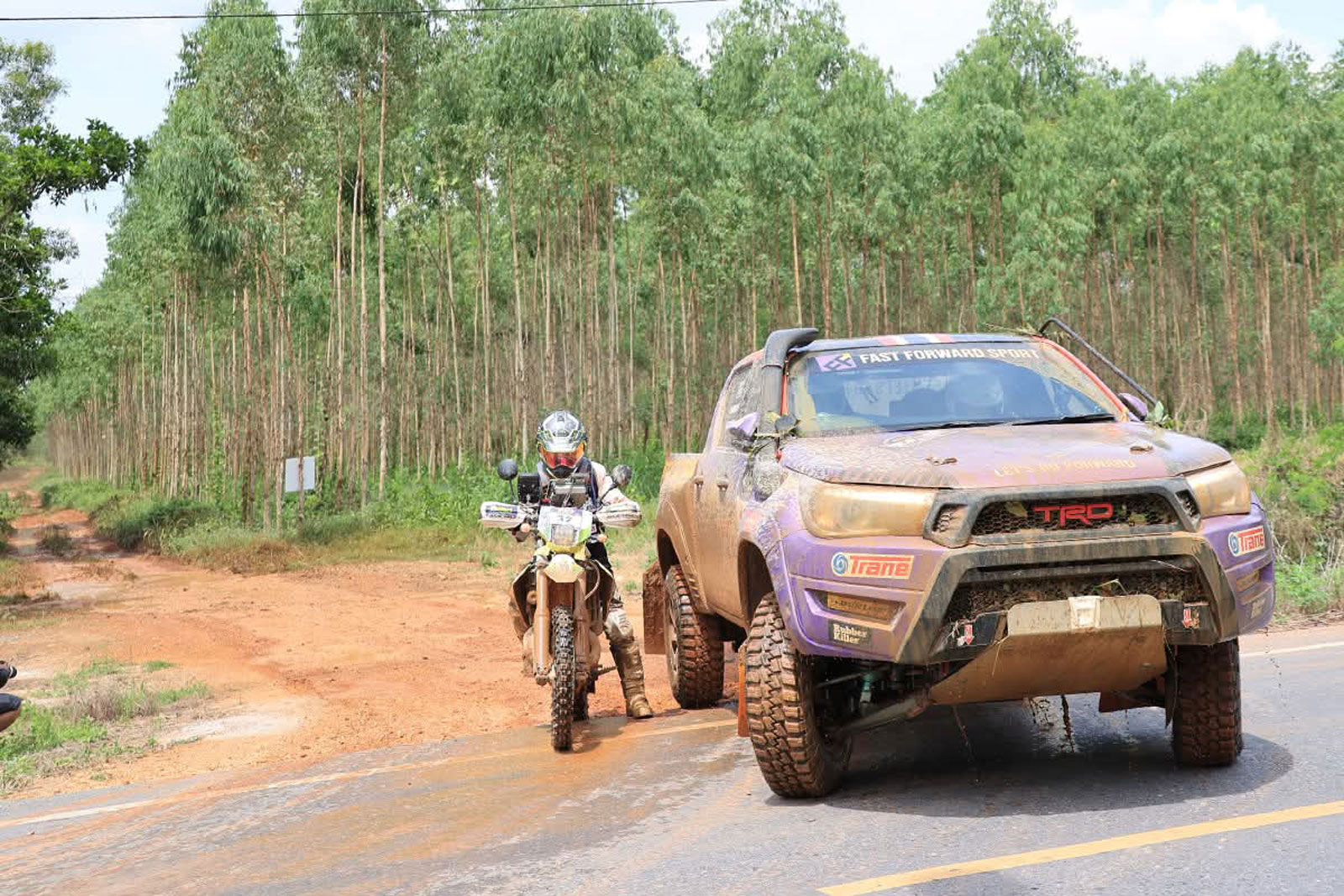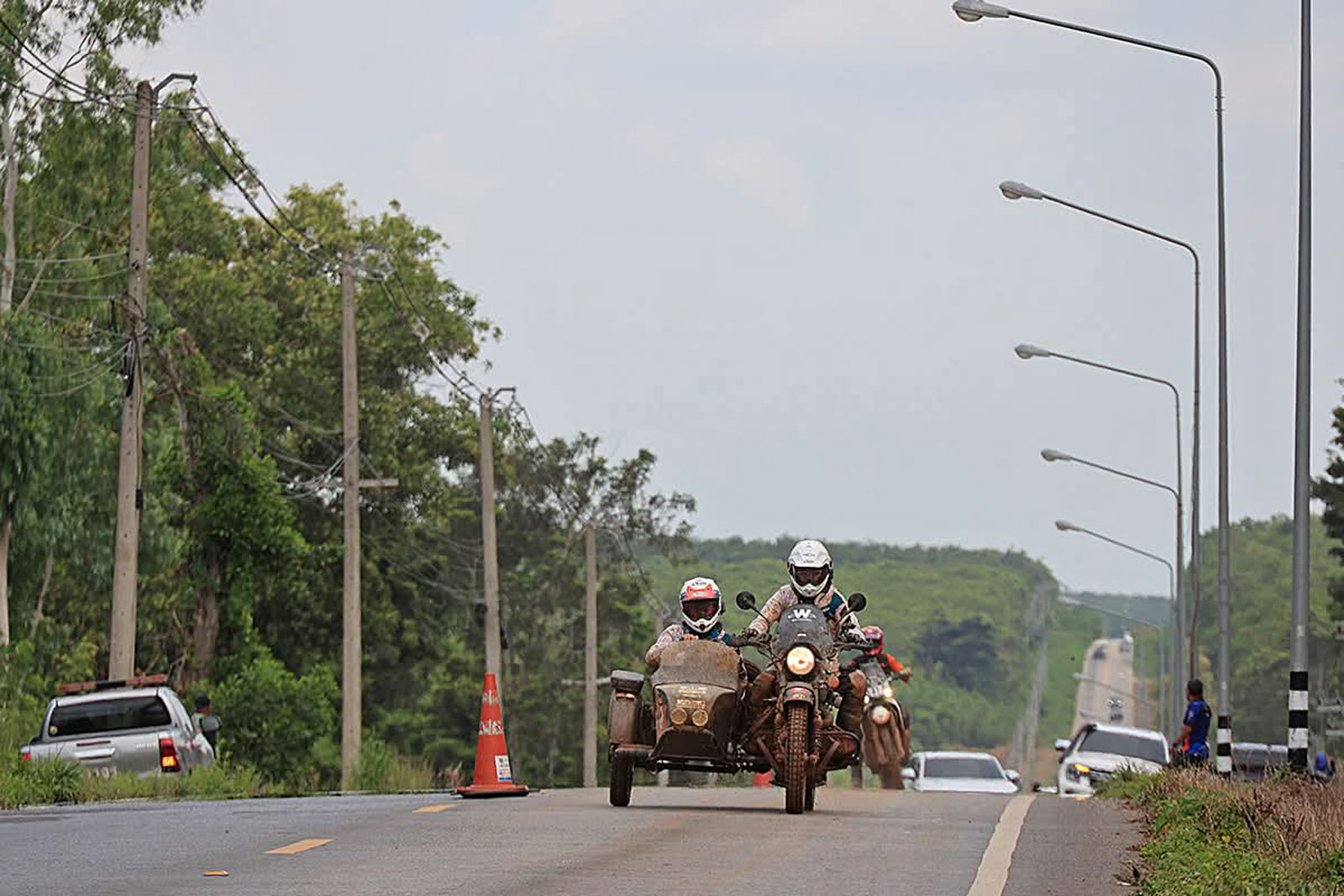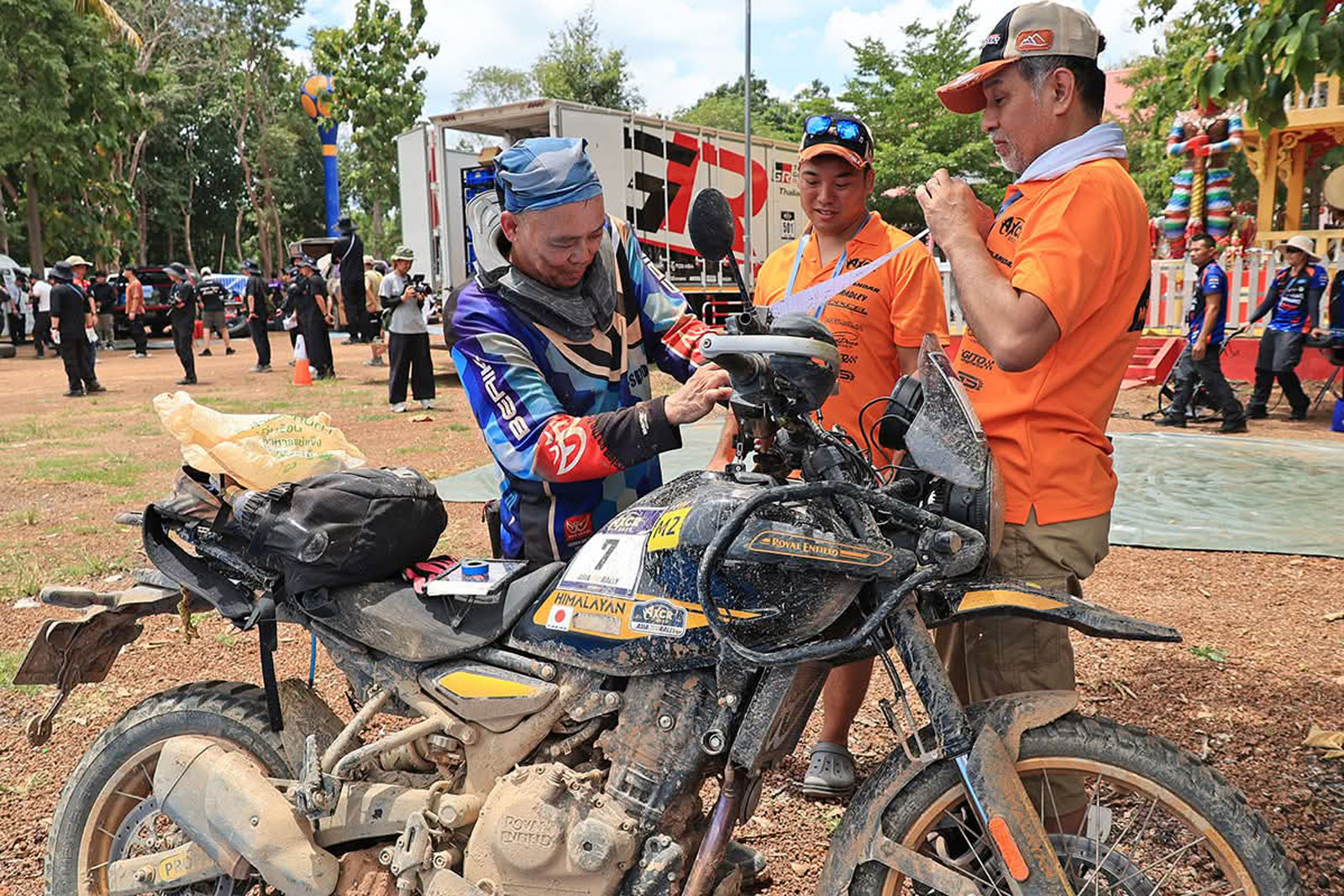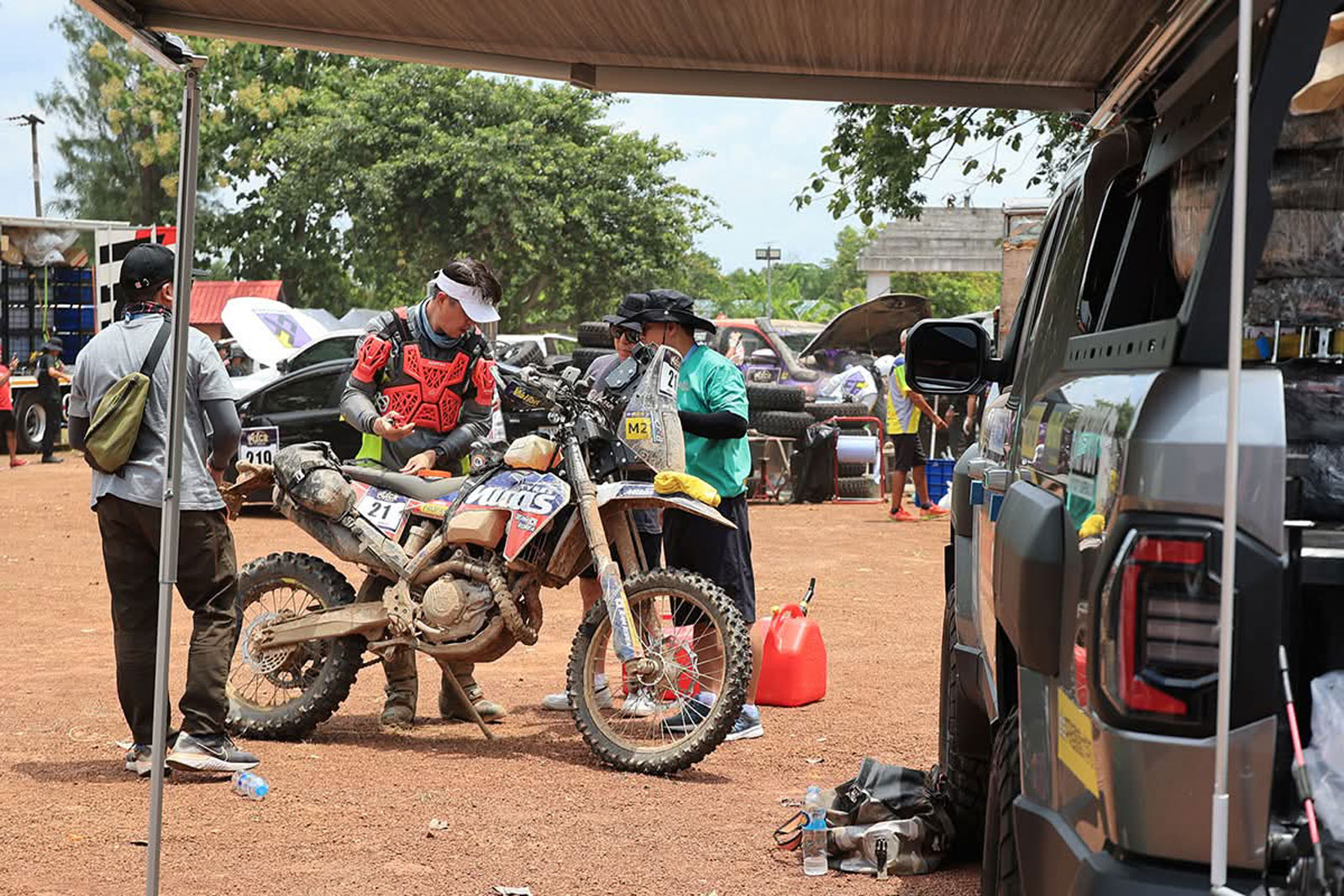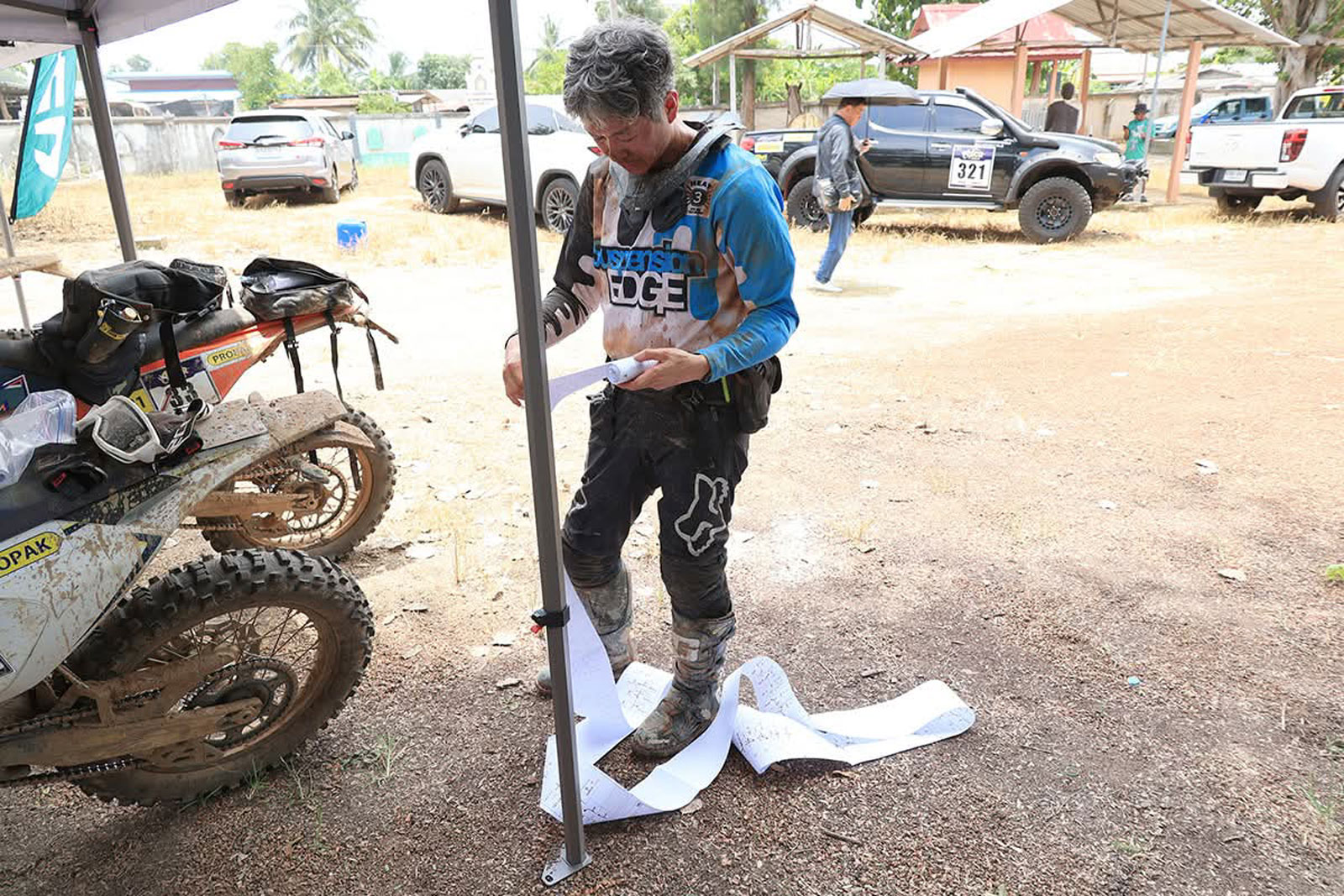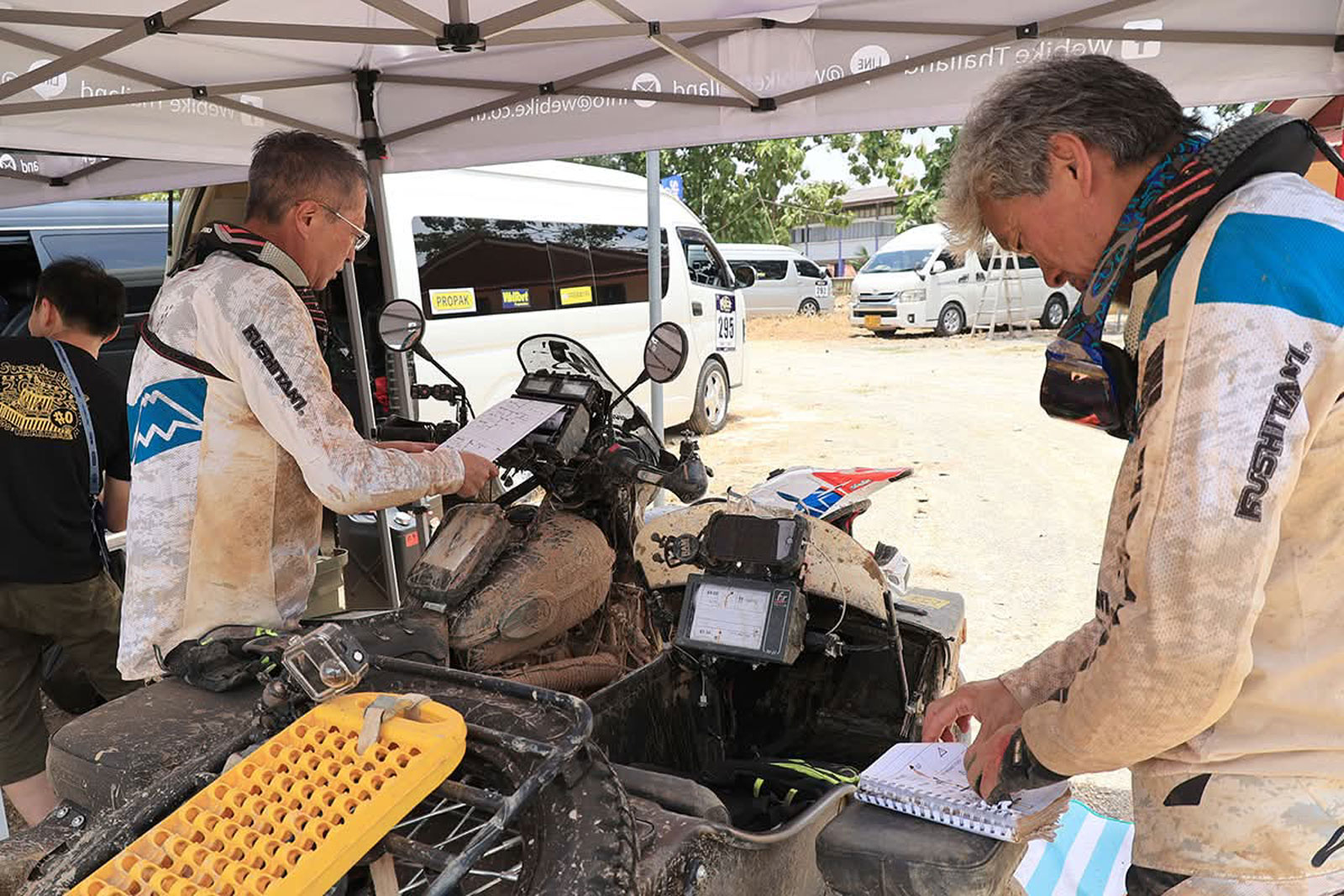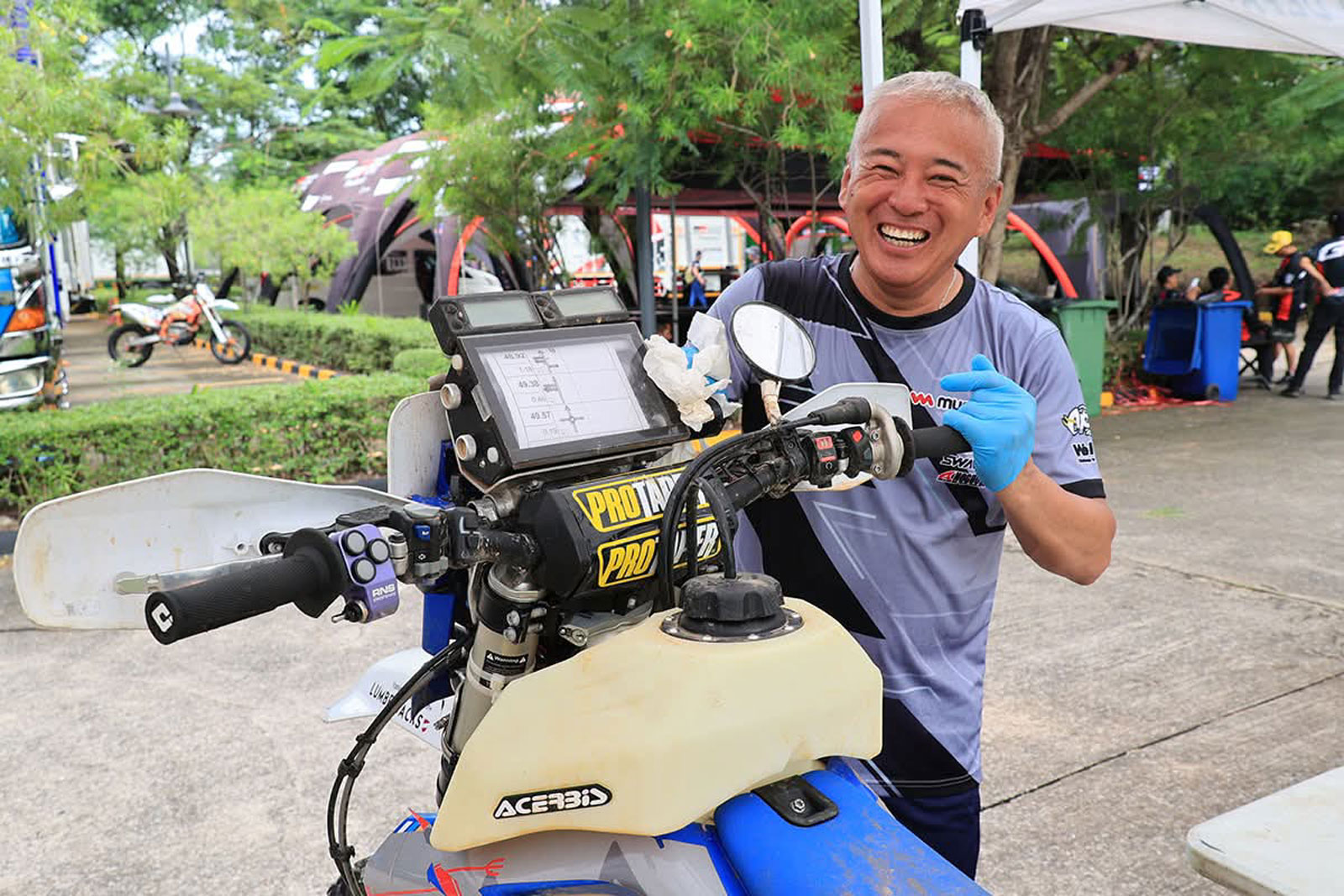

LEG1
Saturday, August 9, Prachinburi
Eight days + 3250 km long
The curtain opens on the 30th anniversary of the event.
At 6am, the sound of a motorbike exhausts suddenly echoed around the hotel's central roundabout in the early morning hours serving as a wake up call. The riders' determination to face the long race ahead can be felt in their heartbeats.
One by one, the riders leave the Asia Pattaya Hotel. The first road section is 116 km of public roads leading up to the timed Special Stage (SS), where the riders are given a target time of two and a half hours and expected to arrive on time while observing traffic laws.
The SS on the first day of competition (LEG1) is quite lengthy at 199.13 km. There is a break in timing at the 'PC (Passage Control) Stop' in the middle of the SS where mechanics provide service in the service area immediately adjacent to the stop.
Time measurement is then resumed at the 'PC start' and the time to the SS goal is accurately measured. This SS time is accumulated each day and the winner is determined by the total time taken over the eight days of SS running. There is also a 'maximum time' for SS runs, and if this is exceeded, a penalty time is added.
In addition, the road section (RS) between the departure hotel, special stage (SS) and next arrival hotel must be run within a set time. Penalty time is also applied if this is not adhered to. Thismeans that even if a driver is fast during the SS, a single problem in the RS makes it difficult to win the overall championship. Running promblem-free all the way to the finish line on the final day, is a prerequisite for finishing in the top positions. This is also the reason why privateers set "finishing the race" as their first goal.
There were no mountains or steep hills on this SS, and the entire route was relatively flat consistening of many farm roads on rubber tree plantations. Despite this, the road surface was extremely bad and filled with potholes. As a result, many severe conditions were felt where both left and right wheels had to pass through at the same time. The Jimny’s reported that some of the holes were bigger than the wheelbase of their cars and privateer teams with little suspension modifications had a particularly difficult time navigating the terrain.
In addition, some of the potholes were filled with water and mud, making it difficult to see the holes themselves. The slippery mud and uneven road surface caused the cars to rock from side to side, making it difficult to drive straight. Of course, the drivers wanted to improve their times as much as possible, but as the speed increased, the suspension was forced to work harder and the drivers became psychologically fatigued.
In addition, large rocks and stumps were often hidden in the bushes on both sides of the road, and many accidents occurred as teams became impatient and passed through these areas at speed, causing major problems.
The rally was a wild ride in the early stages, with four-wheelers bursting both front and rear wheels at the same time, front suspensions snapping and tyres pointing in the wrong direction. There were even some cars upside down and others falling into ponds.
In fact, out of the 44 cars that entered the rally, 13 cars (30%) received penalties of 10 hours or more due to breakdowns, accidents, exceeding the maximum time due to getting stuck, exceeding the target time of the RS, etc.
The Toyota Hilux of Natthaphon Angritthanon (Thailand) and Thanyaphat Meenil (Thailand) of #113 TOYOTA GAZOO RACING THAILAND set the best time of 3hr 16min 39sec despite starting from 13th position.
Natthaphon is a legend who has achieved the unprecedented feat of winning the championship for seven consecutive years, from the 2013 event to 2019 before COVID. After the pandemic, he returned to AXCR in 2024 and this year his car has received competitive improvements which was reflected in his stage results.
Natapong has a very simple winning style. He takes the lead on the first day and keeps it until the last day, but he is so consistent that no one can overtake him and the time gap between second place and the rest tends to widen.
This year, Team Mitsubishi RALLIART is aiming to regain the title for the fourth year in a row, and the Triton has been finishing at a very high level. The battle with the #112 MITSUBISHI RALLIART team of Chayapon Yotha (Thailand) and Peerapong Sombutwong (Thailand), who are in second place was also a spectacle to behold.
The top ranked SS competitors were called up to the stage one by one when the dinner ceremony began at 19:00. They received their prize money awards from Mr Kenji Ishida, Chairman of the Asian Rally Friendship Association, and were photographed with big smiles. They were all happy to receive their prize money and pose for photos.
A detailed race report, including privateers, will follow in due course. Firstly, we look forward to watching the LEG2 battle unfold in the mountainous terrain!
(Photo: Manabu Takahashi, Text: Dai Kawamura)
Moto
A tough first day with the battle for the places
The first day of the rally was blessed with fine weather with no morning winds and low humidity and moderate temperatures (compared to Japan) in the Southeast Asian summer. It was a welcome relief for the participants to have such a fresh morning with perfect conditions for 40 motorbikes to take to the first rally stage in Thailand.
The lengthy road book distributed the day before (which is actually a scroll of frame diagrams for motorbikes) made it a struggle as early on,
Unlike Auto (four-wheeled vehicles), in Moto (two-wheeled vehicles) riders must read and understand the map unassisted. While driving (in a car, a person in the passenger seat called a ‘co-driver’ is responsible for reading the map and instructs the driver which direction to go). For riders a 'road book holder' (in Japan, commonly called a map holder) is placed near the steering wheel which is used to electrically fed scroll. With this, riders are able to measure the distance and determine the direction of travel.
Deciphering the map is as difficult as in previous years, but this year's 'scroll' was even more different. It was a paper 'ehomaki', which was enormous and over 10 cm in diameter.
The competitors were tasked with how to best deal with this jaw-droppingly voluminous map as the volume of paper that can be wrapped around a map holder is limited, and it varies from manufacturer to manufacturer, with each competitor preparing a map holder that they think is the best .
The unexpected volume of non-standard maps exceeded all of these, so much so that none of the map holders could actually accommodate the large scroll.
It was even noted at the official briefing the day before the event, the organiser (Japanese) said: "What about the Moto class? This?” and chuckled.
Not a single motorcyclist complained here. The 'fat roll' problem did not seem to be that big a deal, and some maps were cut and divided into two, three or four sections.
It is typical for motorbike riders to discard their maps on stage after use as they are no longer required however, to add further complexity for the riders this year, a portion of LEG.1 maps are shared with LEG.5 maps. The organisers strongly reminded the riders not to discard the maps after they had finished LEG.1.
For anyone interested in race results should check the daily results. Unlike sprint races, the Rally Raid is an eight-day event, including rest days, and it is difficult to say at this early stage how much the rankings will change due to various penalties applied.
If we had to name a few notable players, it would be Ikemachi, a veteran rallyist and a veteran of the Asian Rally, Matsumoto, the previous year's winner, and Izumoto, who will be making his first appearance in the Asian Rally in nine years and is considered an absolute champion (perhaps an exaggeration) in Mongolian and Japanese competition rallies.
Standing in their way are two truly talented rallyists, Jakkrit and Sumaetee, both Thai natives.
The two Thai riders have deep friendships with Japanese rallyists and have built a deep trust beyond the borders through sometimes life-threatening incidents. This is also one of the attractions of the Rally, a form of friendship that is hard to find elsewhere.
On the other hand, we must not forget the young challengers from Japan who are competing for the first time. We would like to keep an eye on these young challengers and let you know whether or not they will be able to fulfil their potential as the days go by. At the moment there is nothing more we can tell you other than that they are doing their best. The sight of the "kind old men" around them supporting them is heart warming and makes me think that this is also a motorbike rally where the spirit of "mutual help" is key.
The Asian Rally, is celebrating its 30th anniversary, has just completed its first day. The Moto class in particular will continue to be a race that we cannot take our eyes off of.
(Photographs and text by Zensuke Tanaka)




